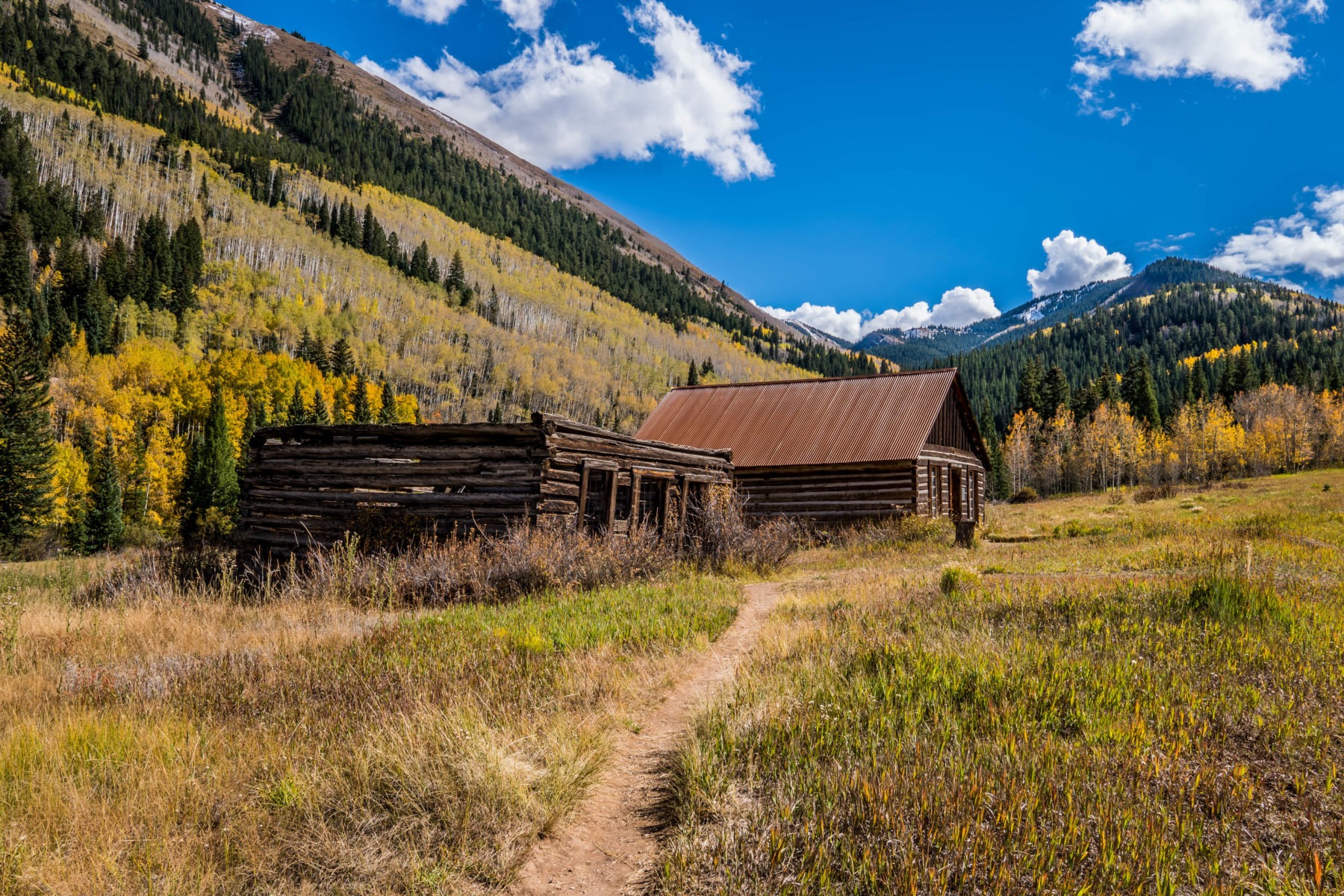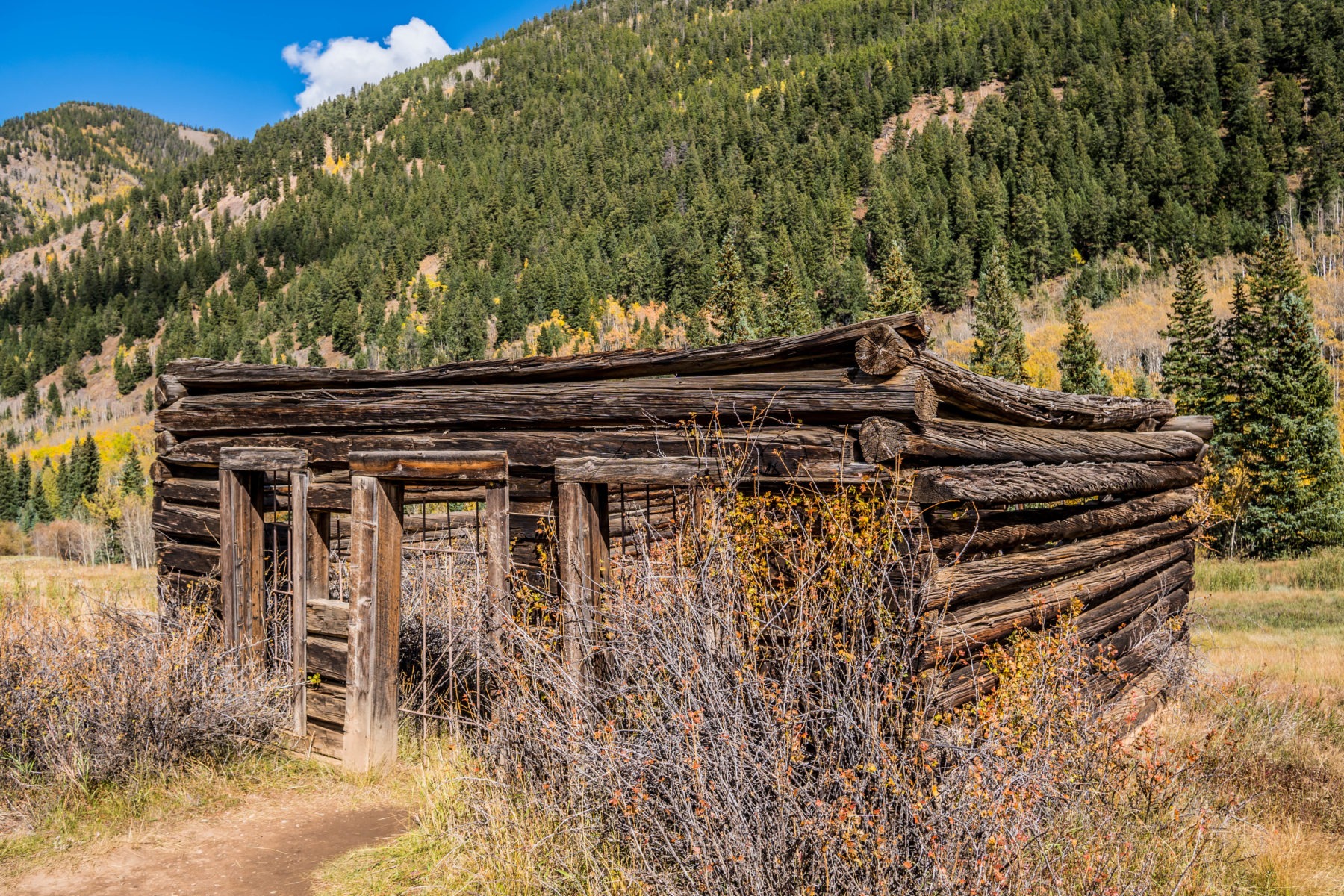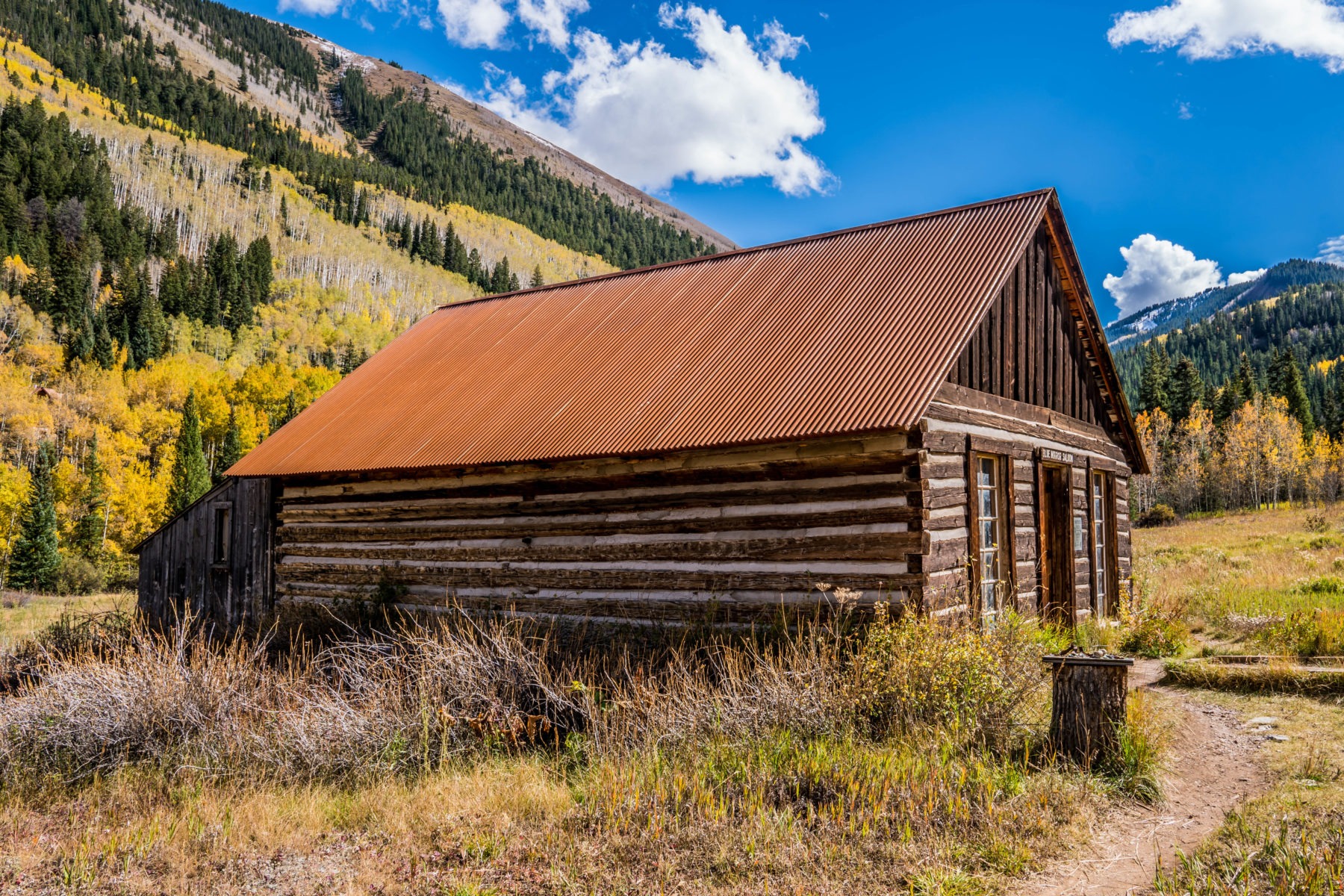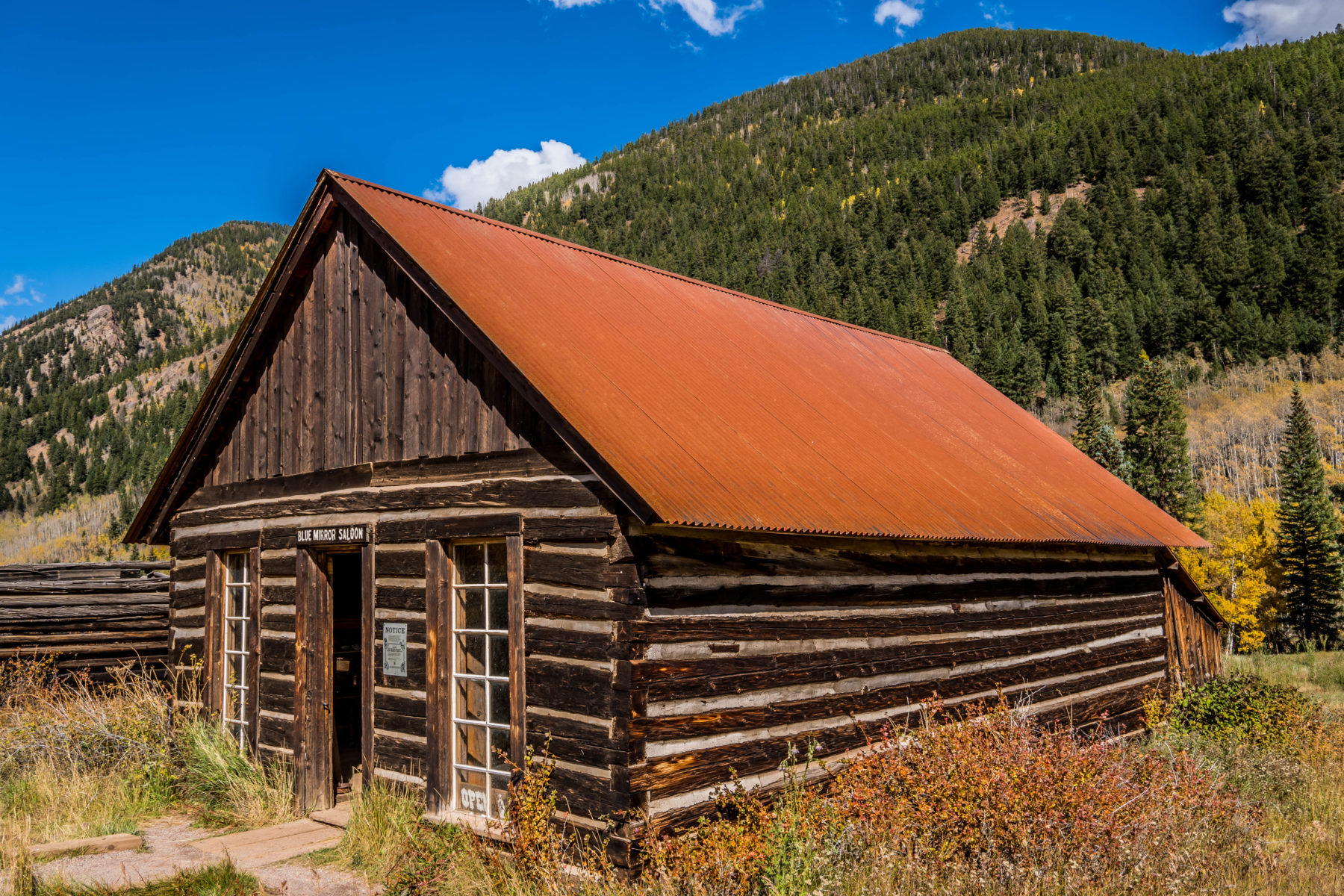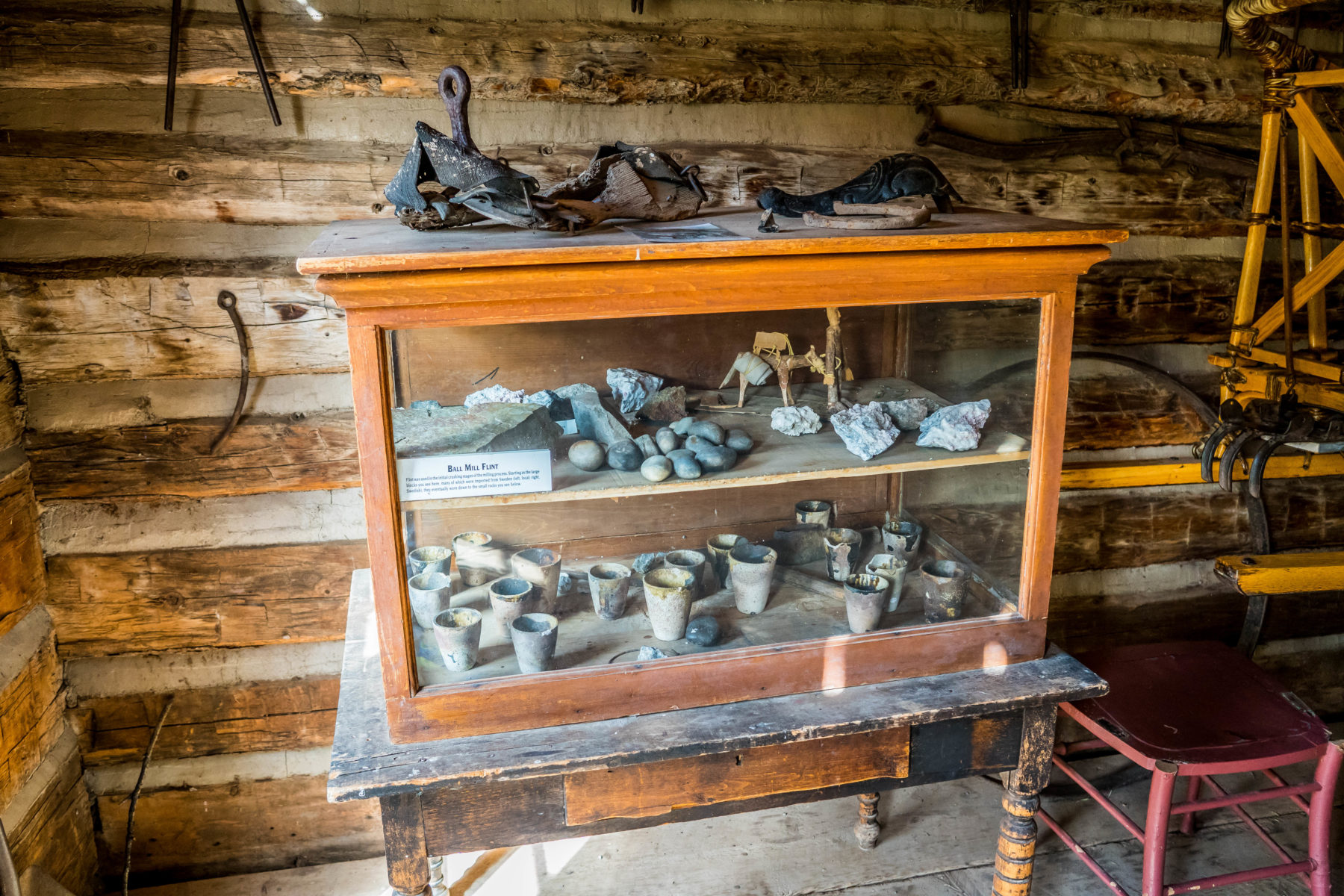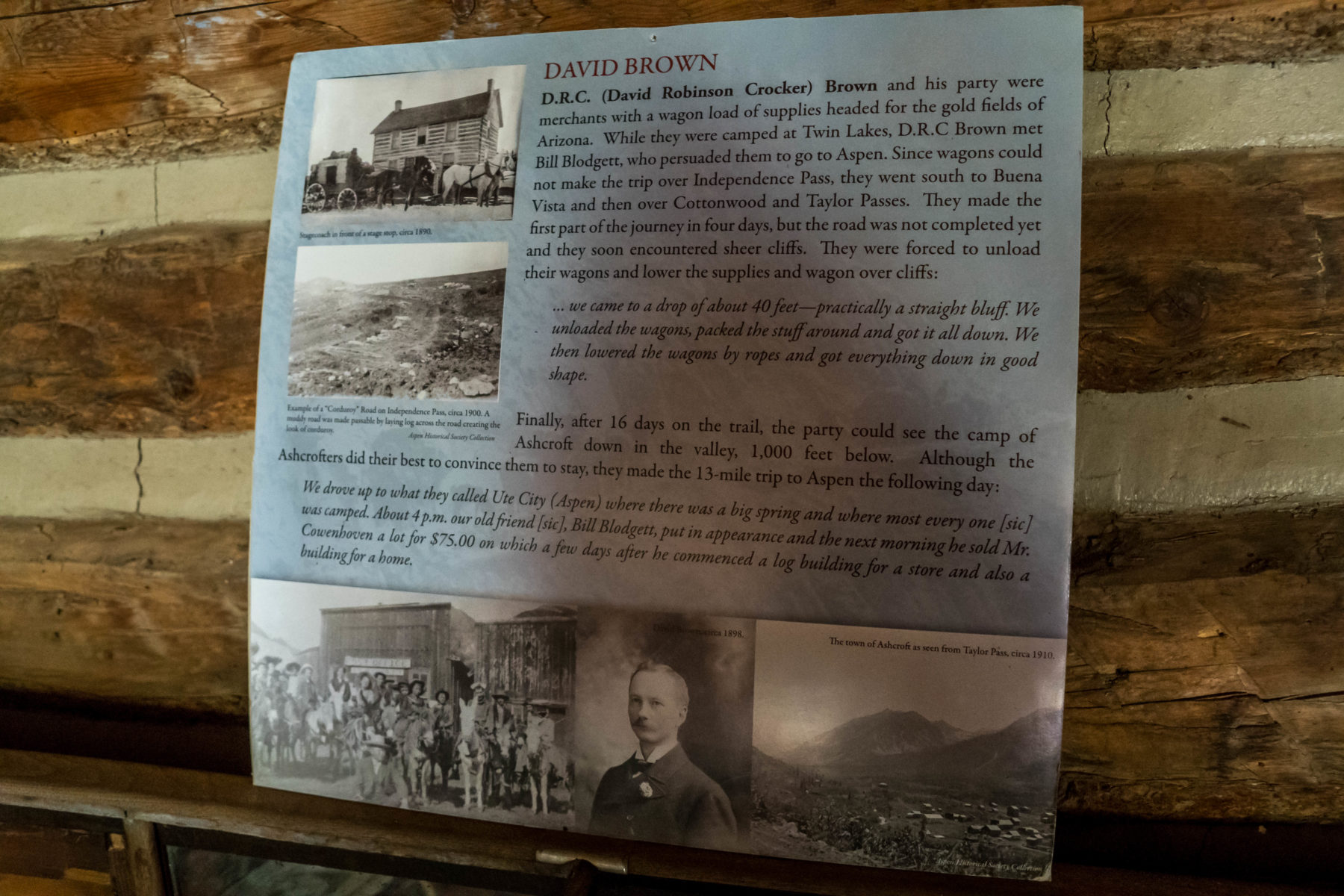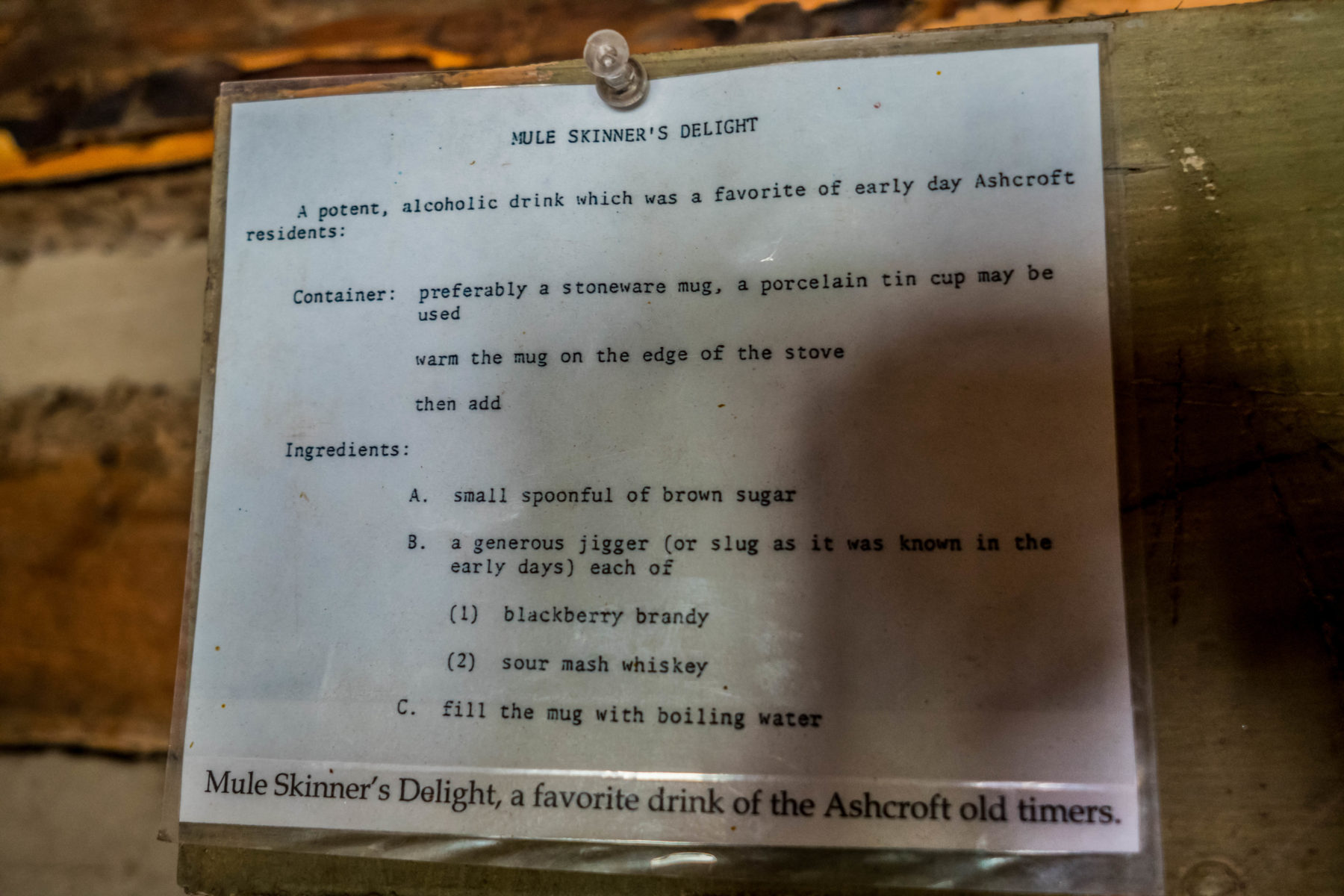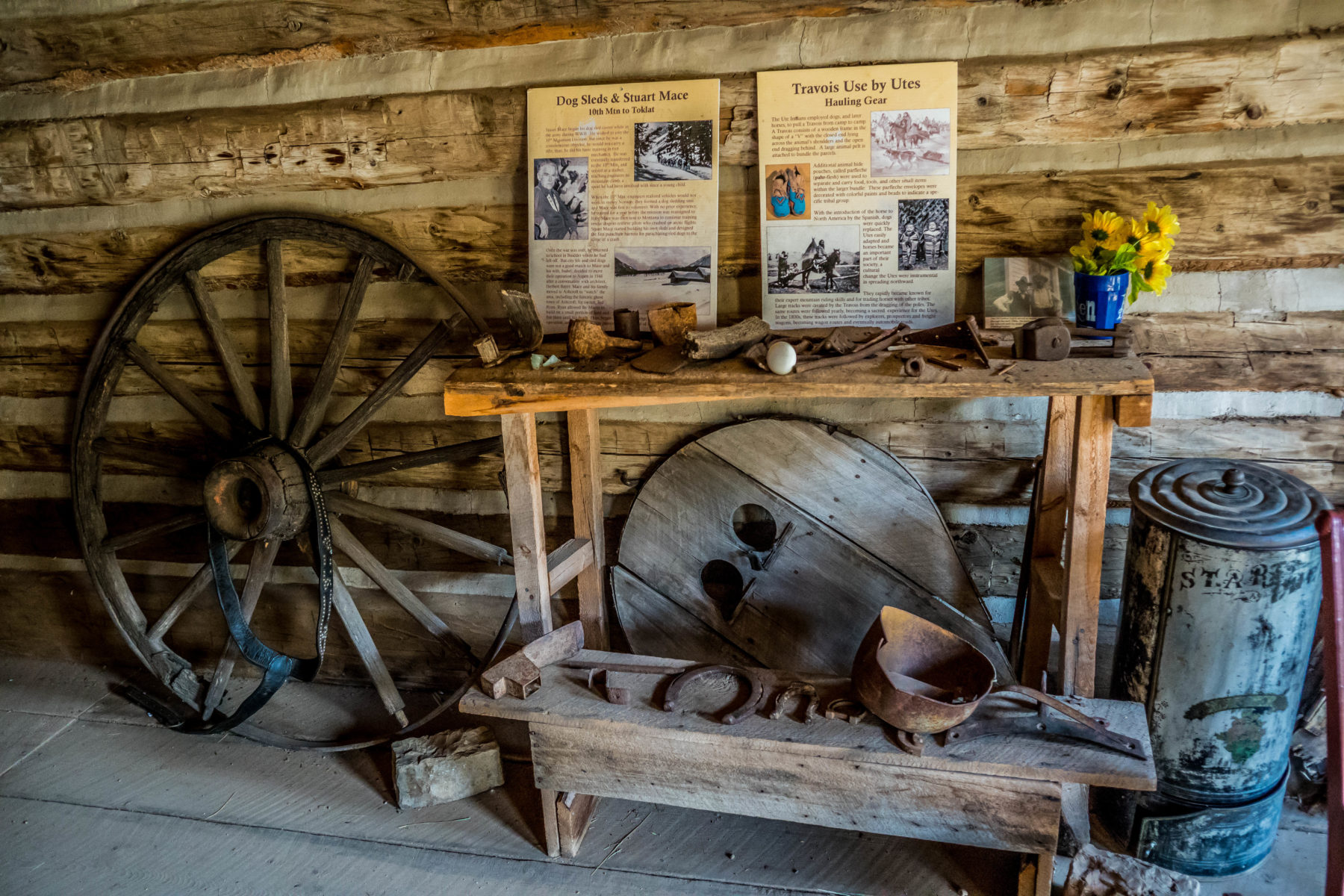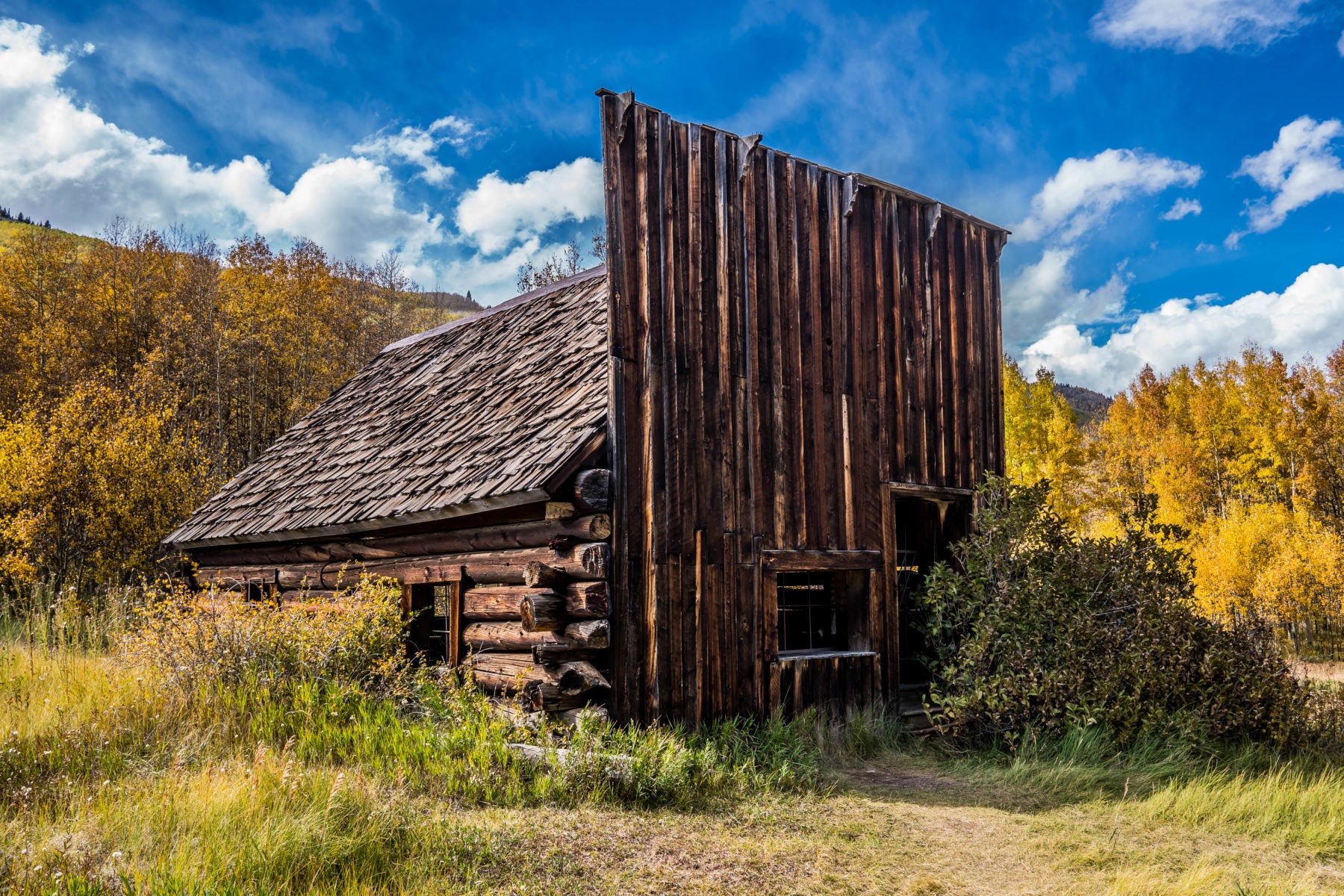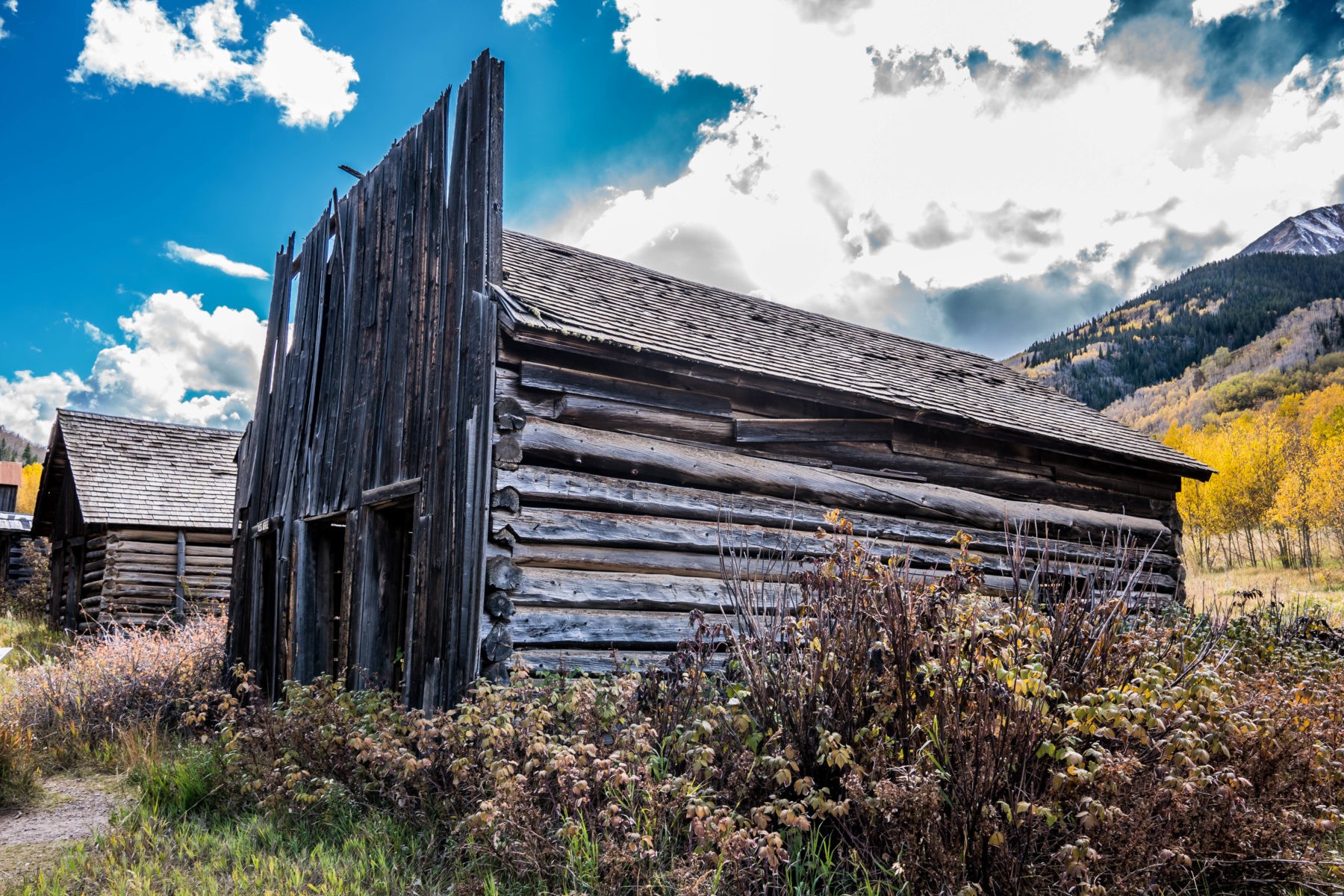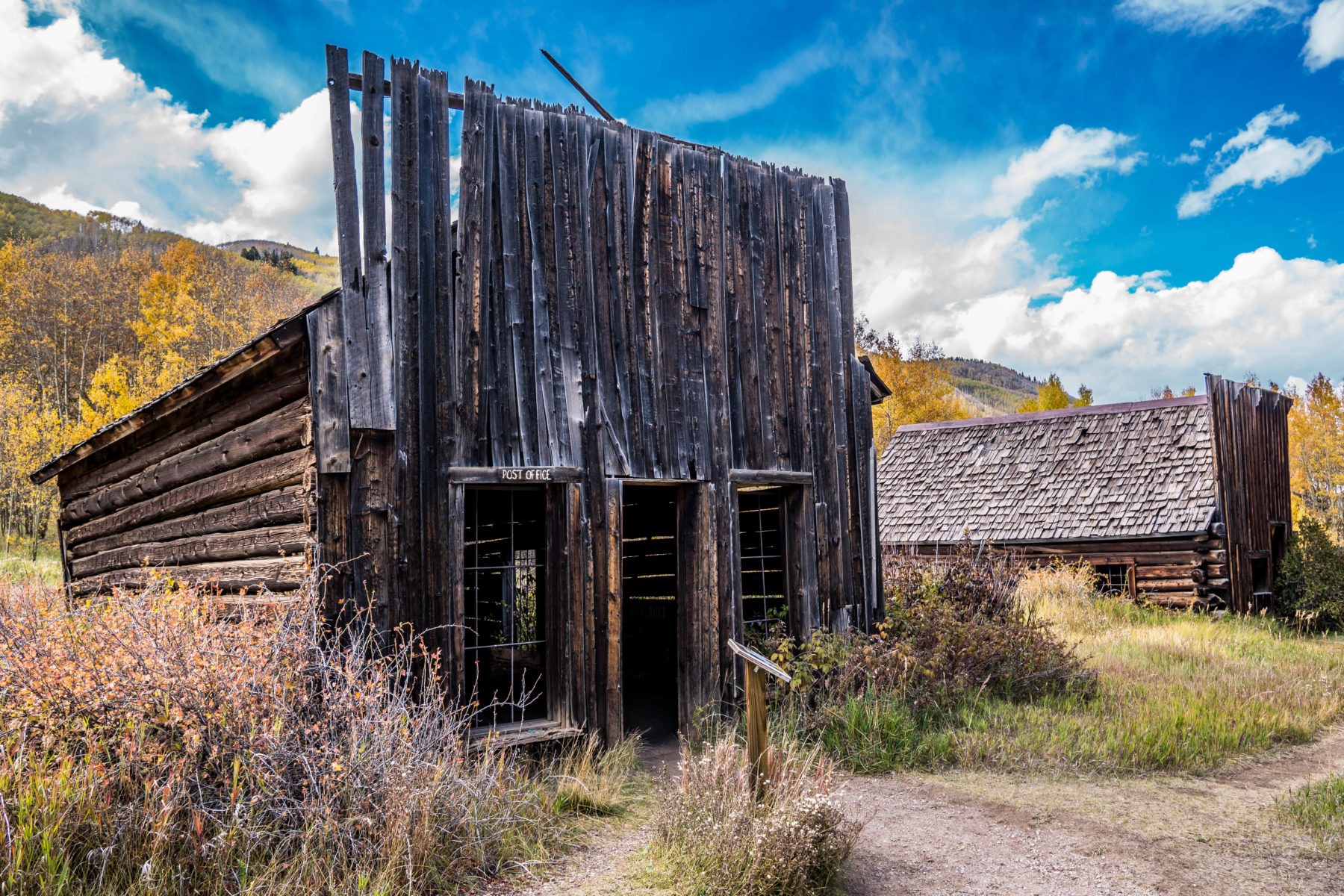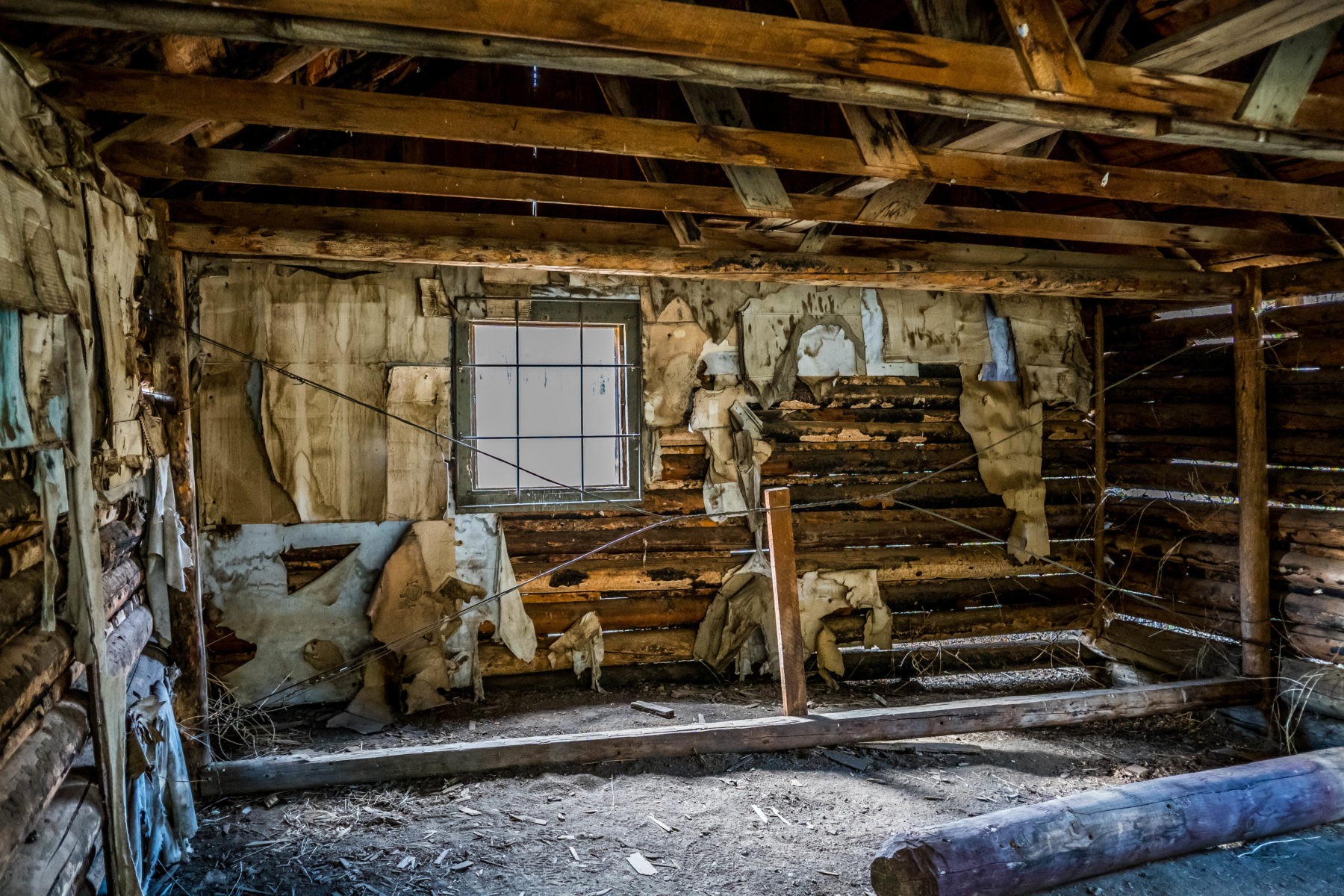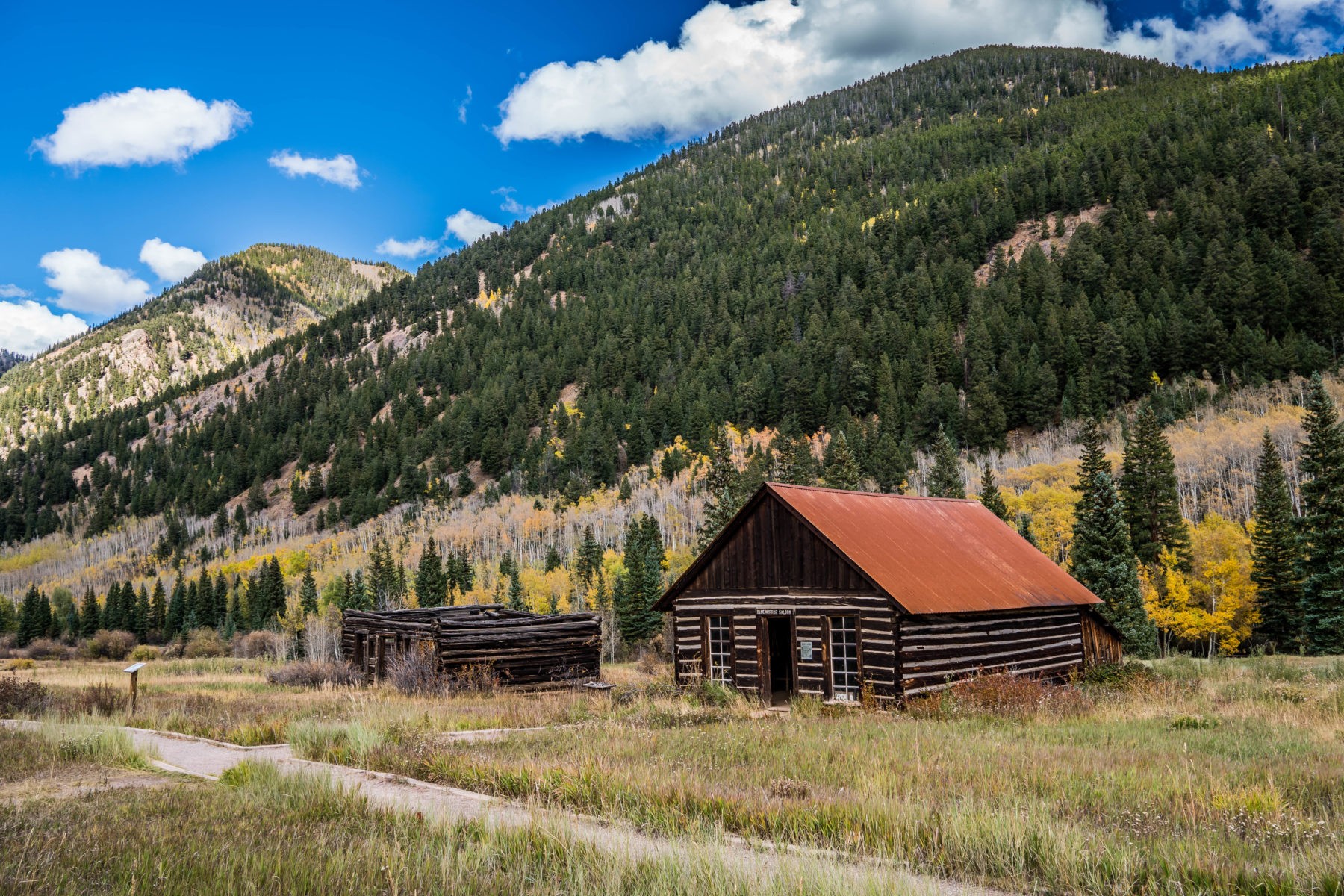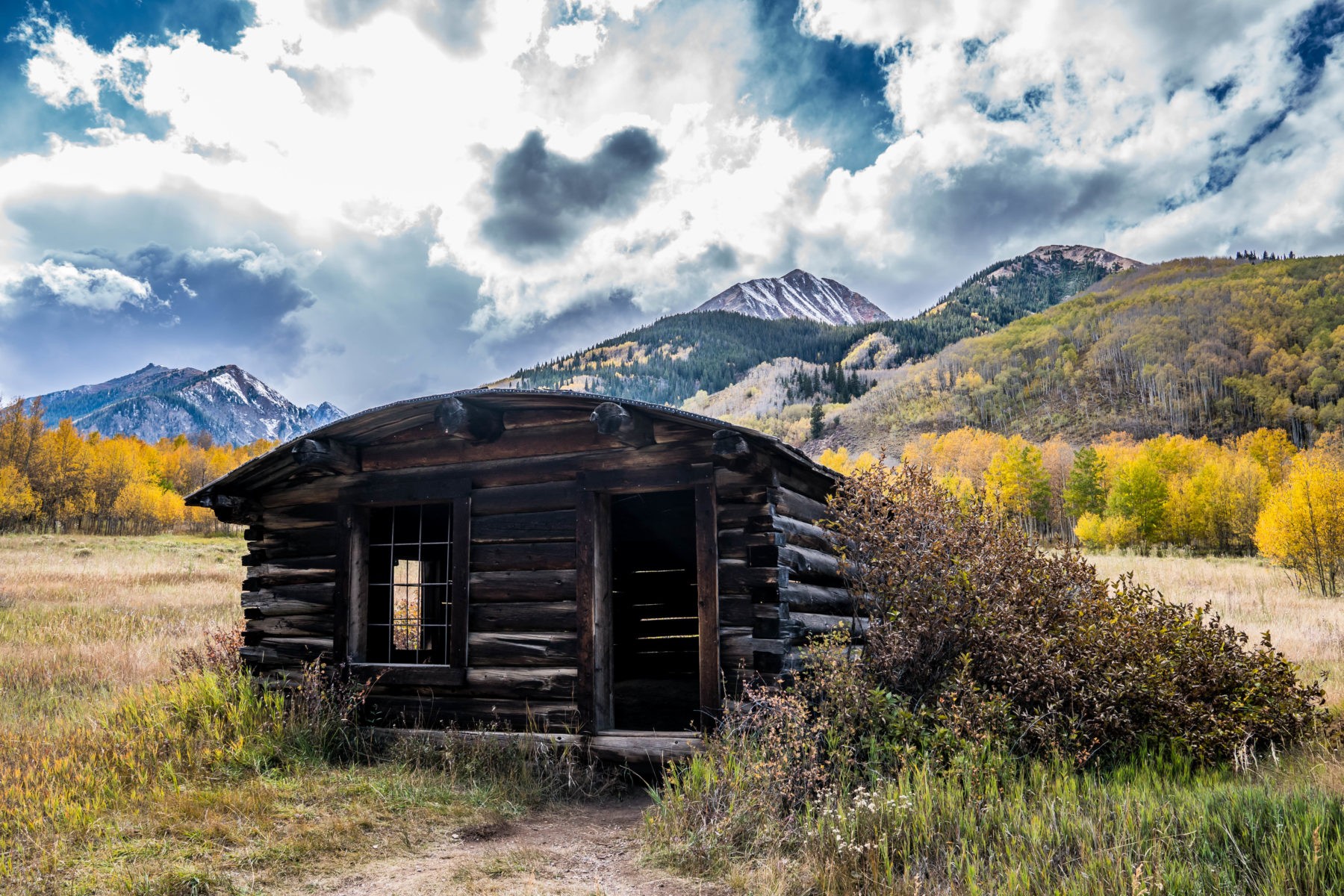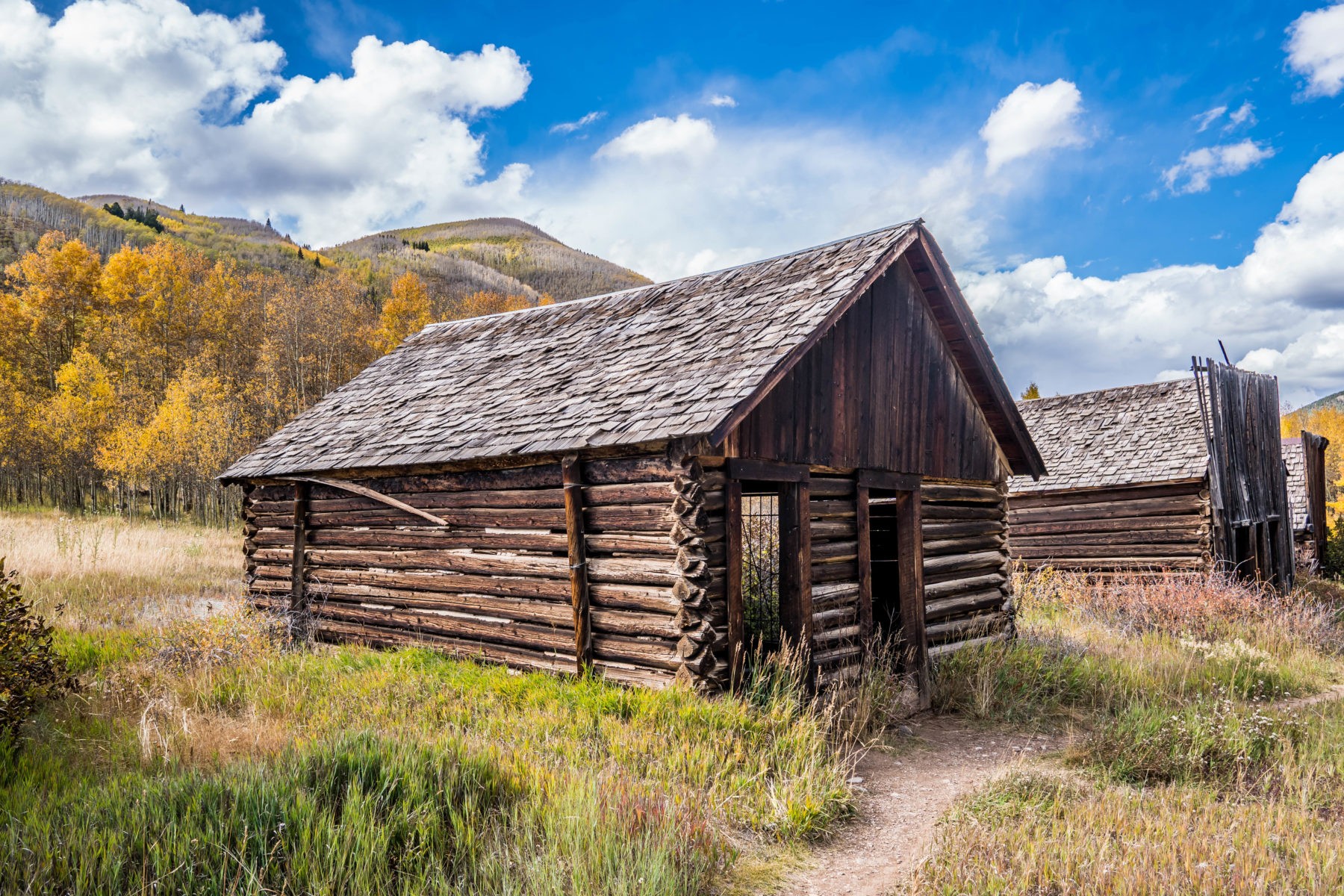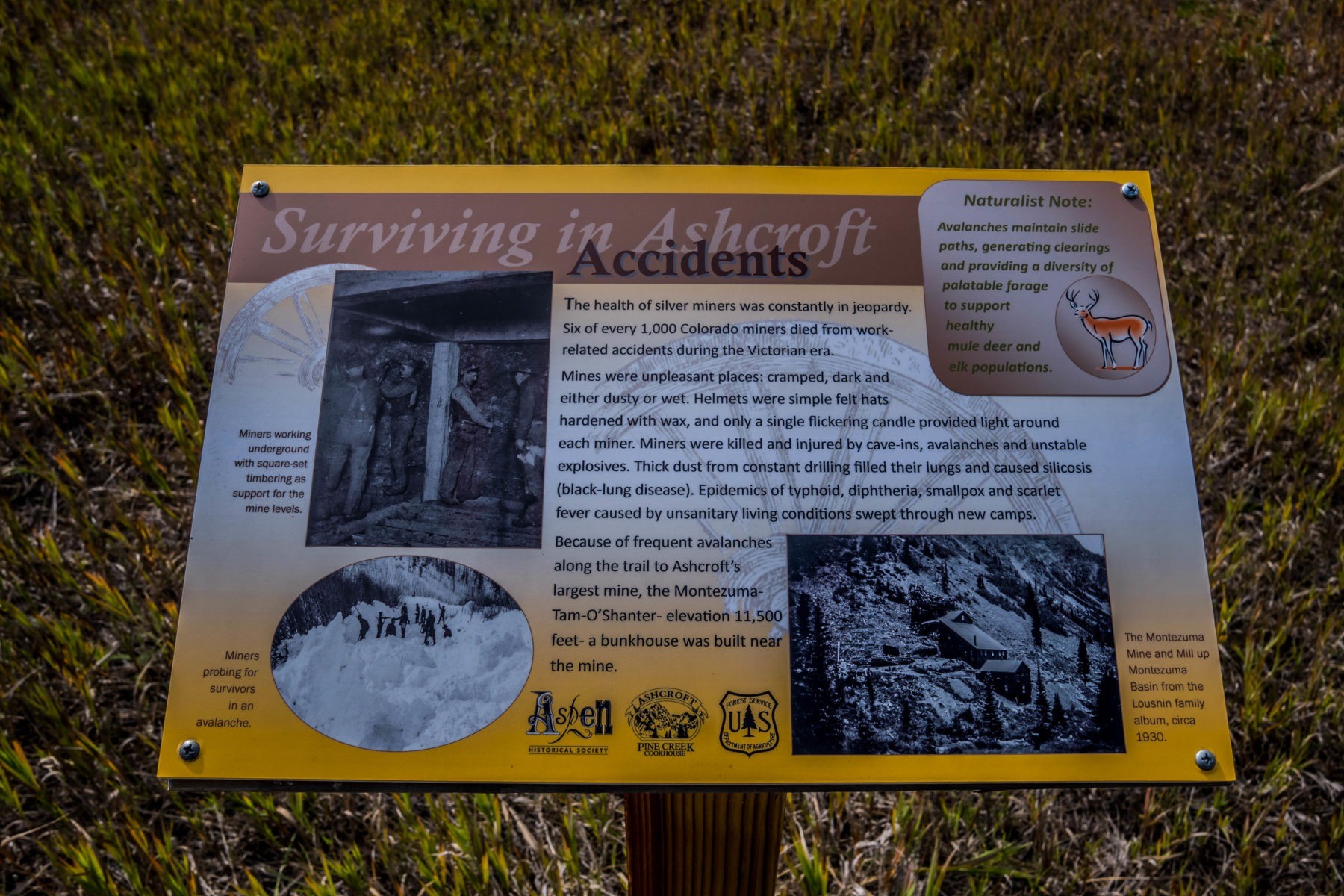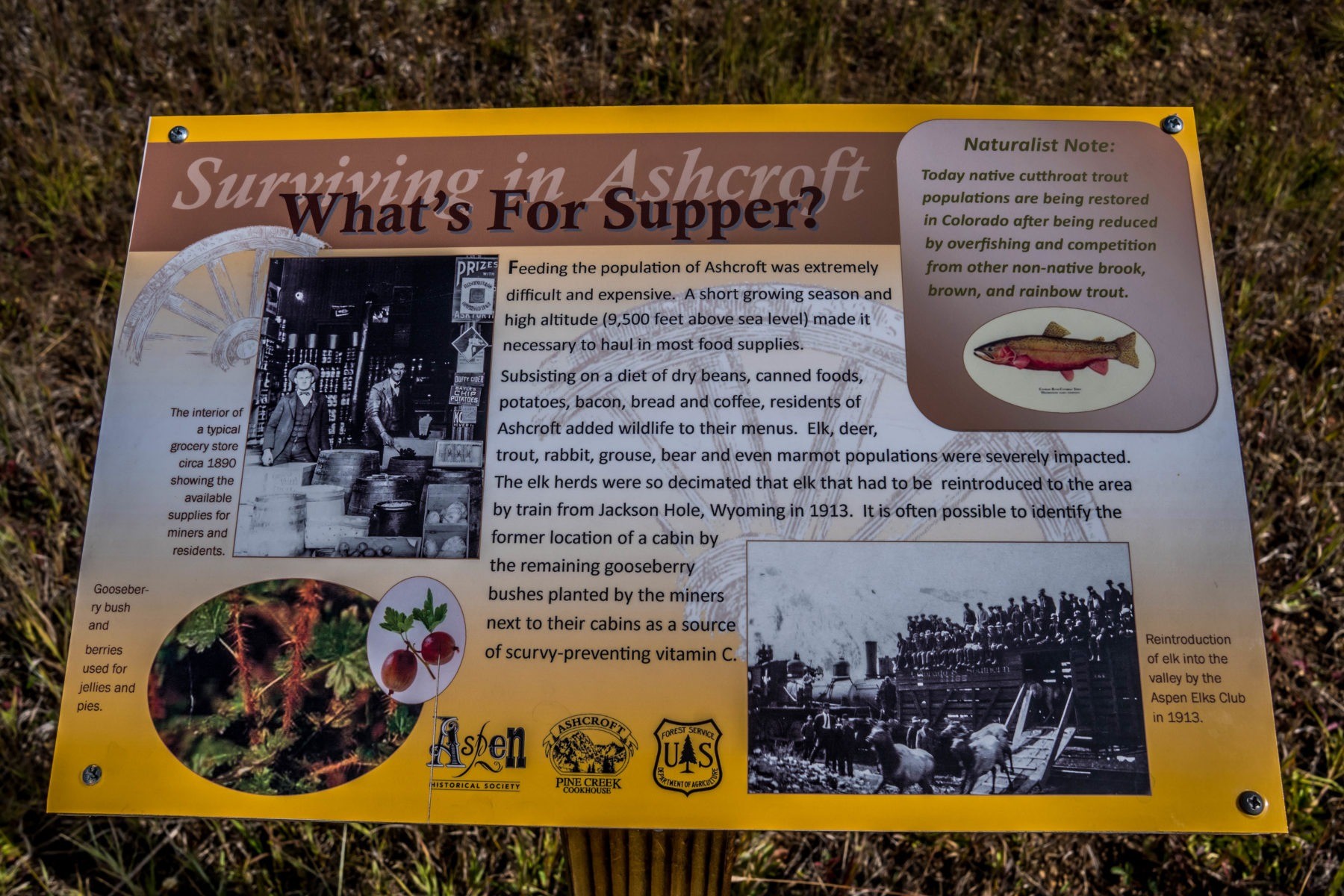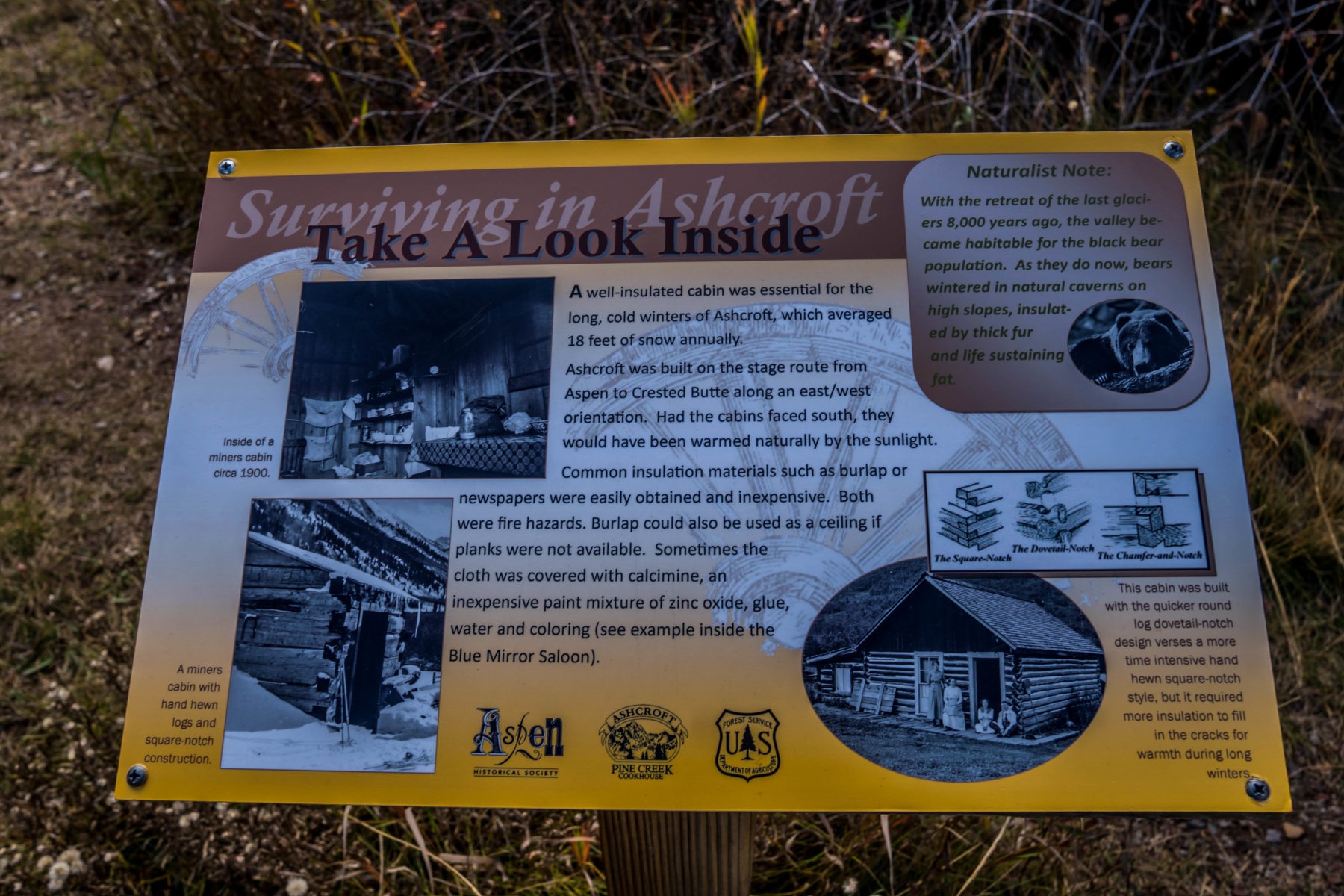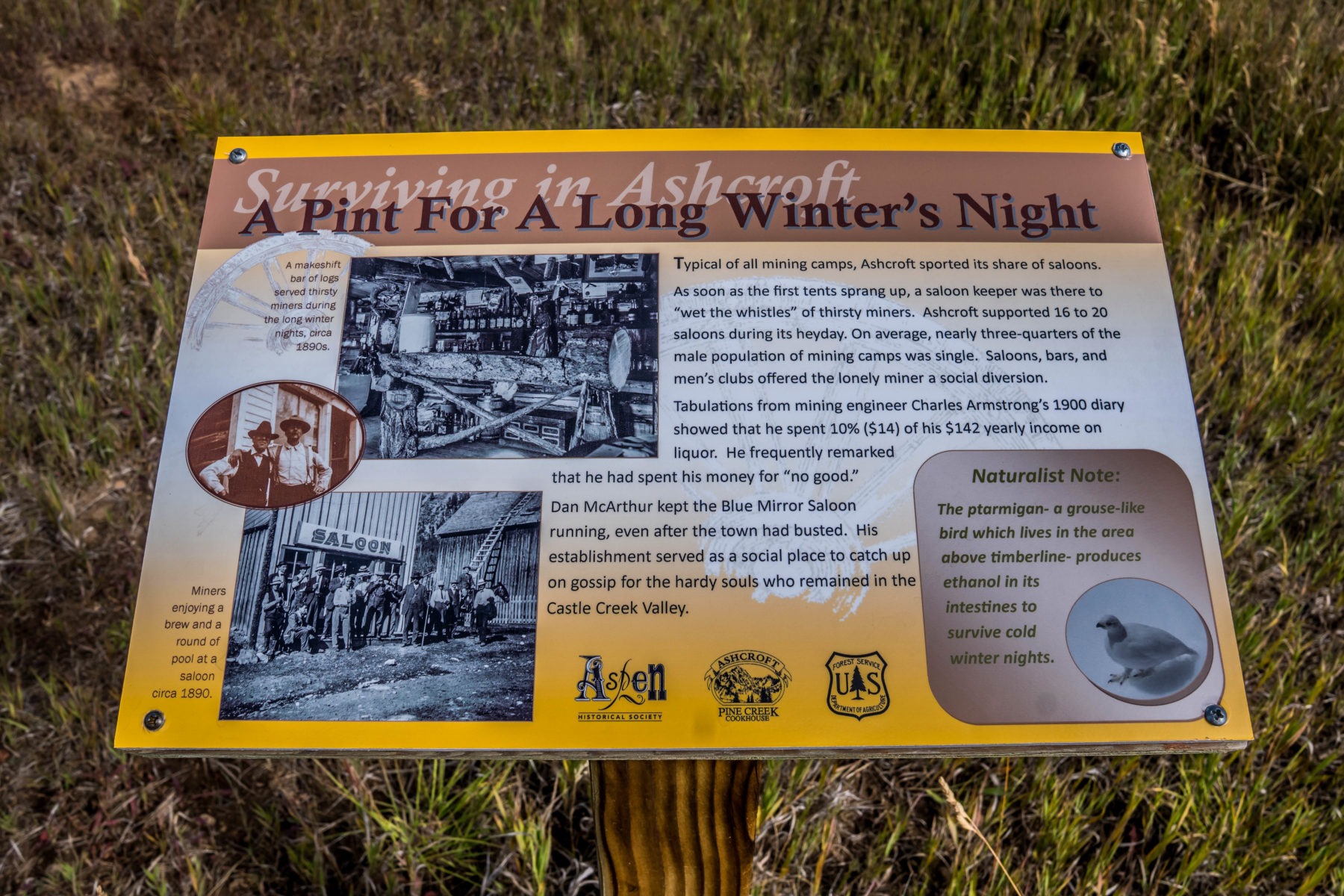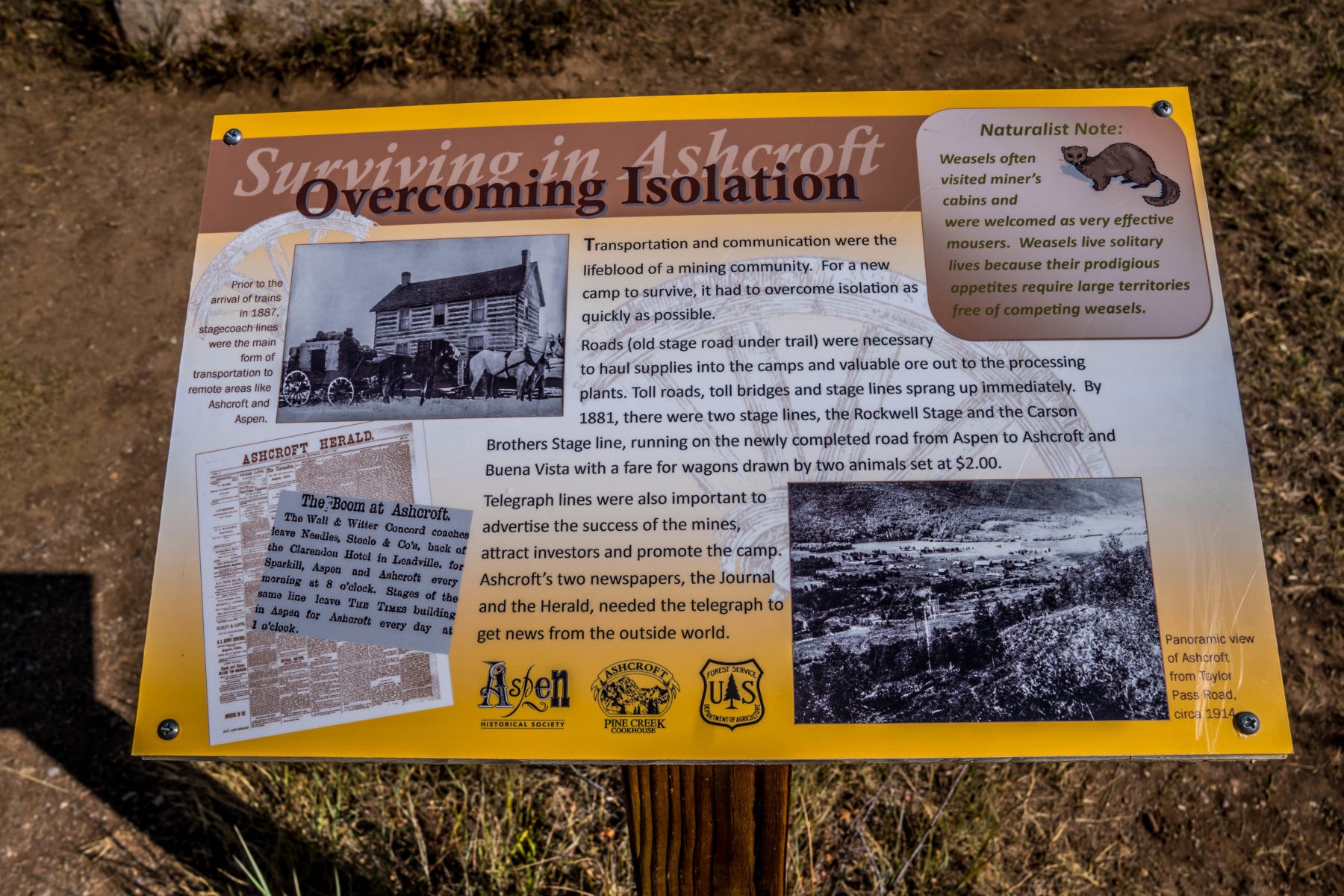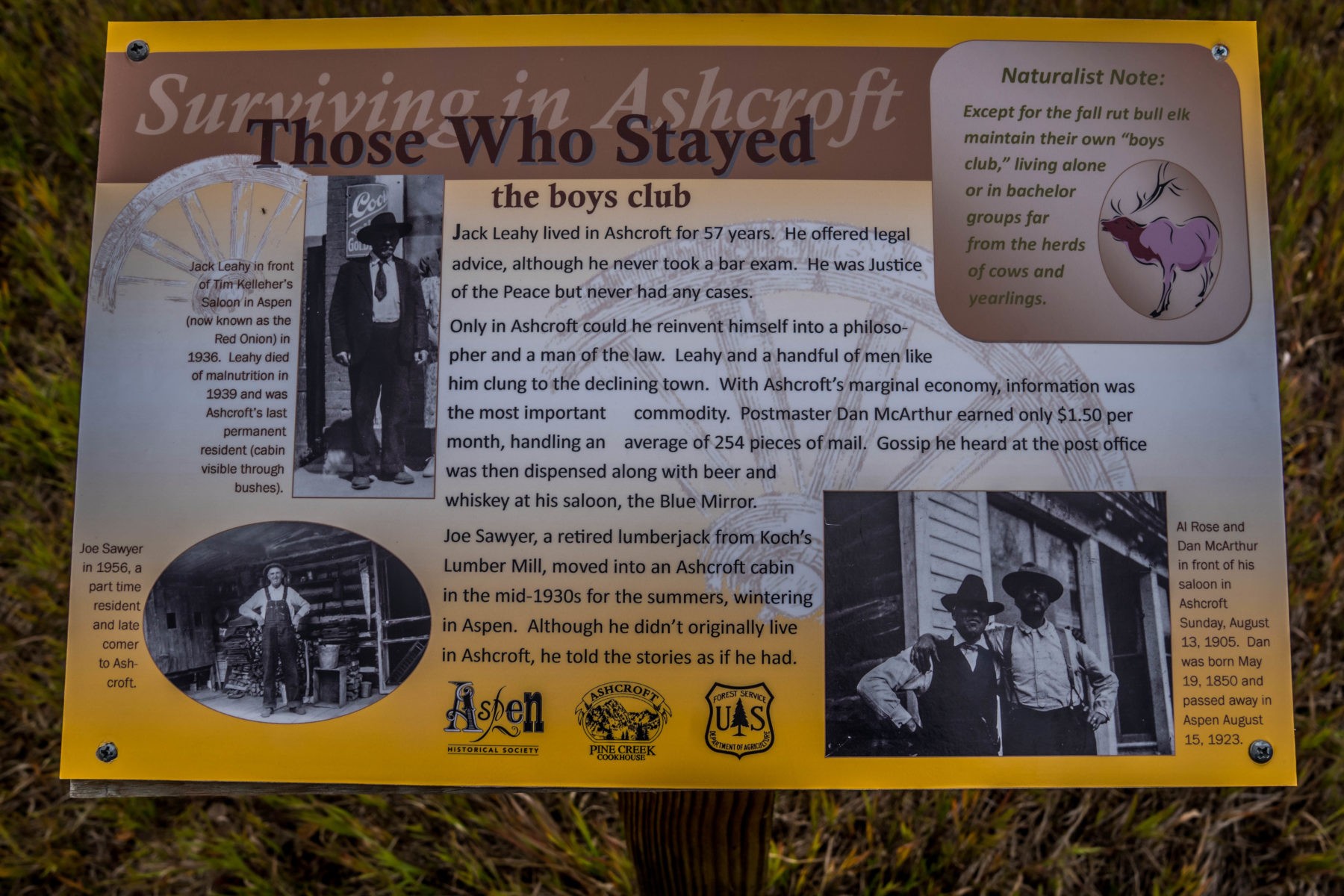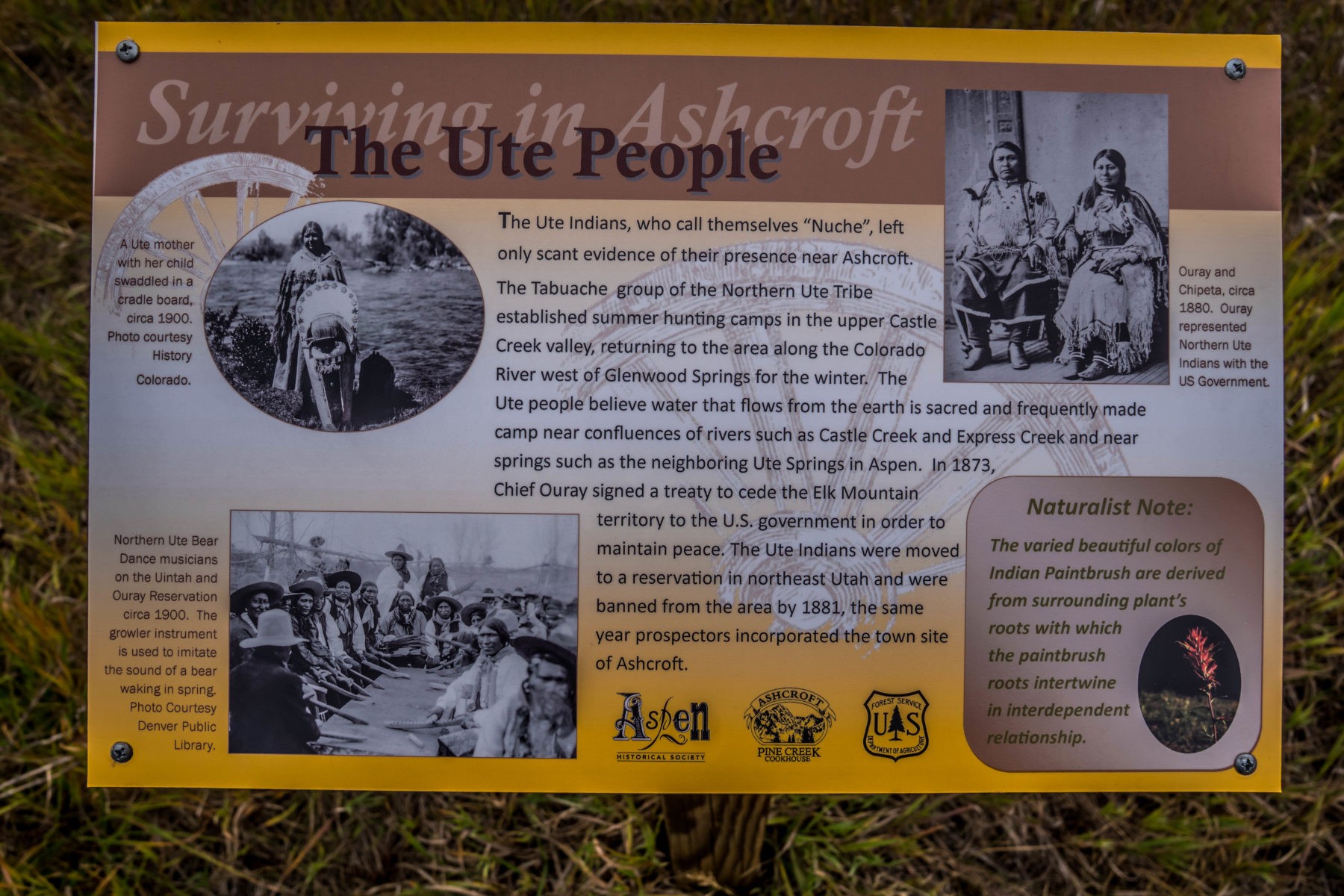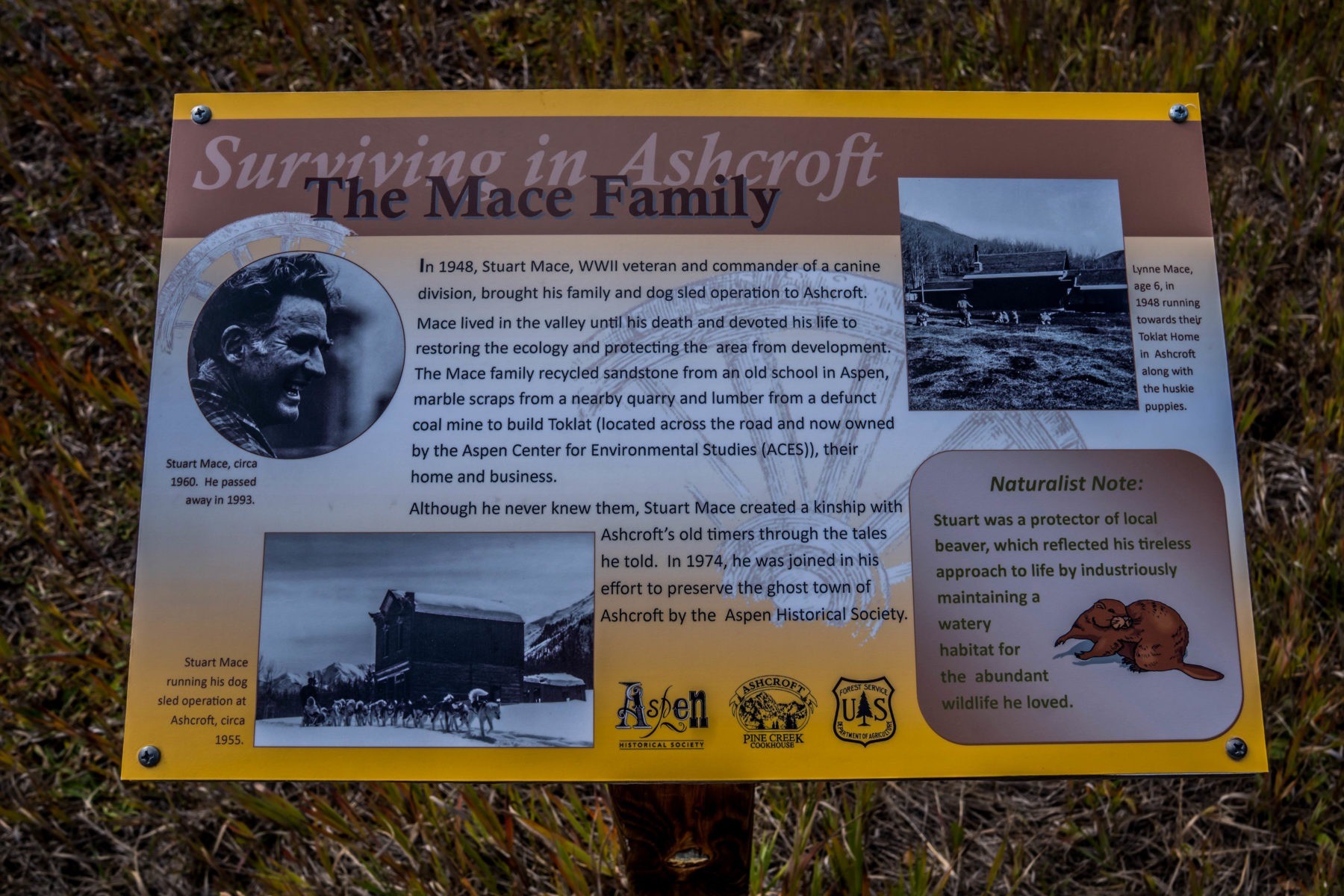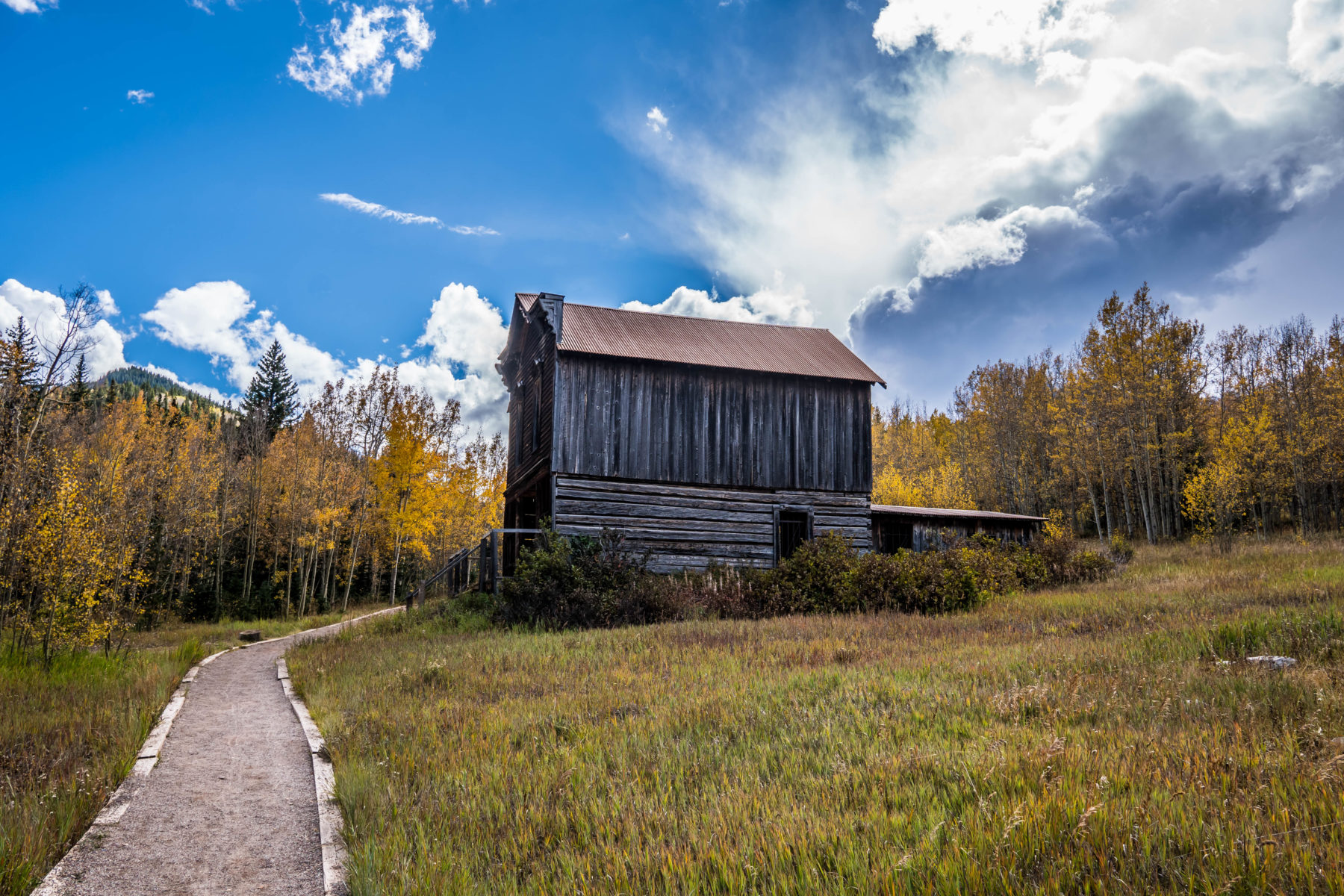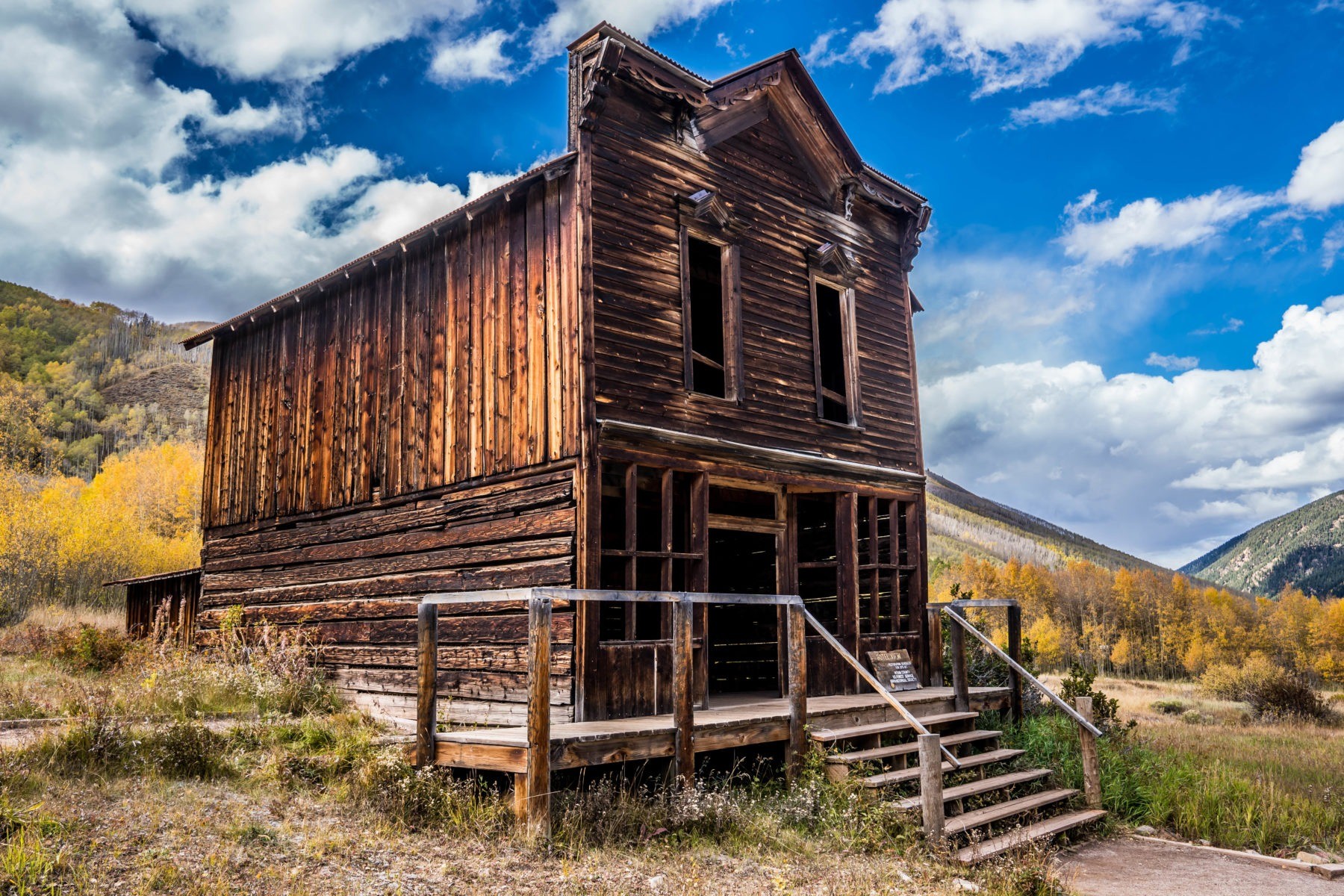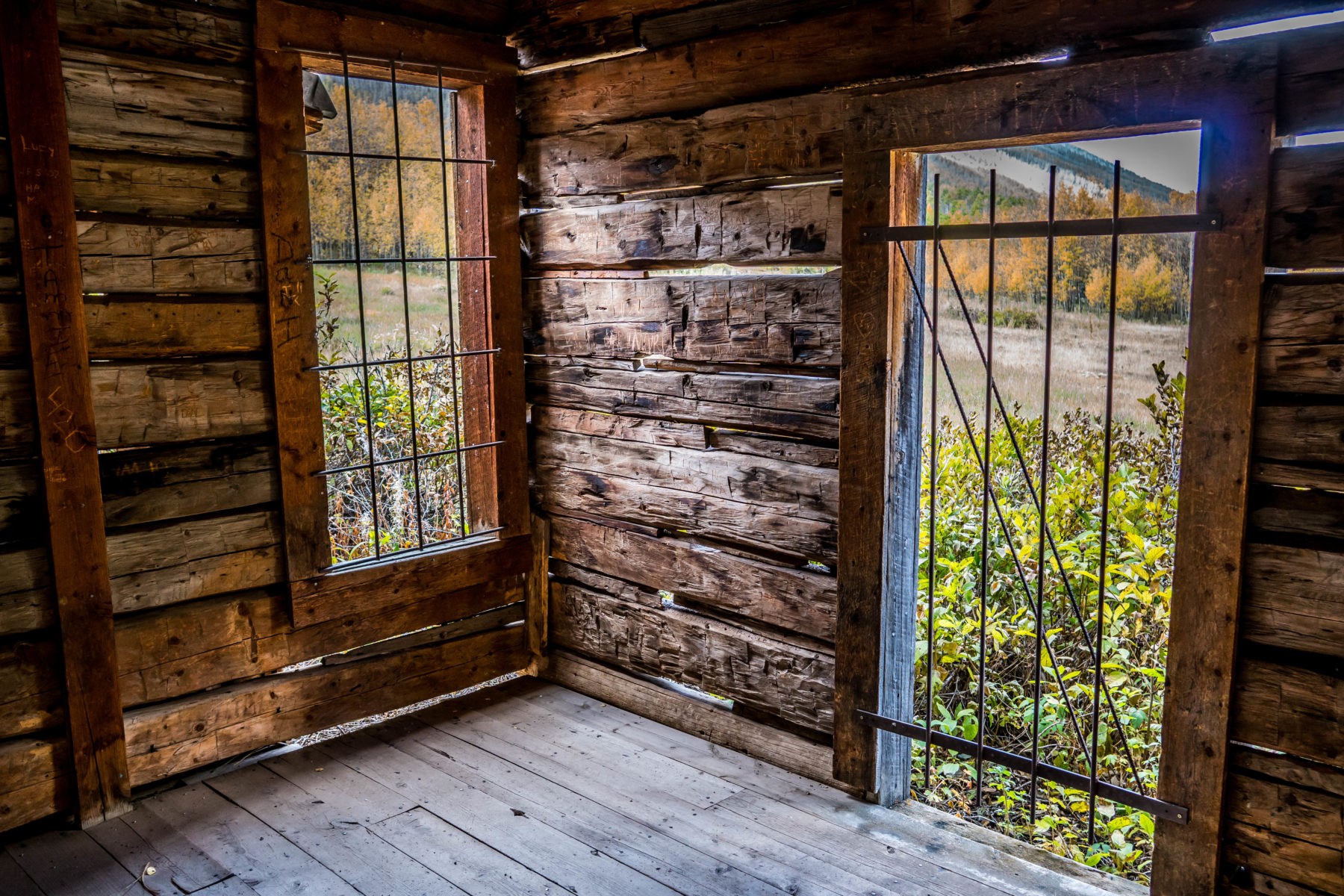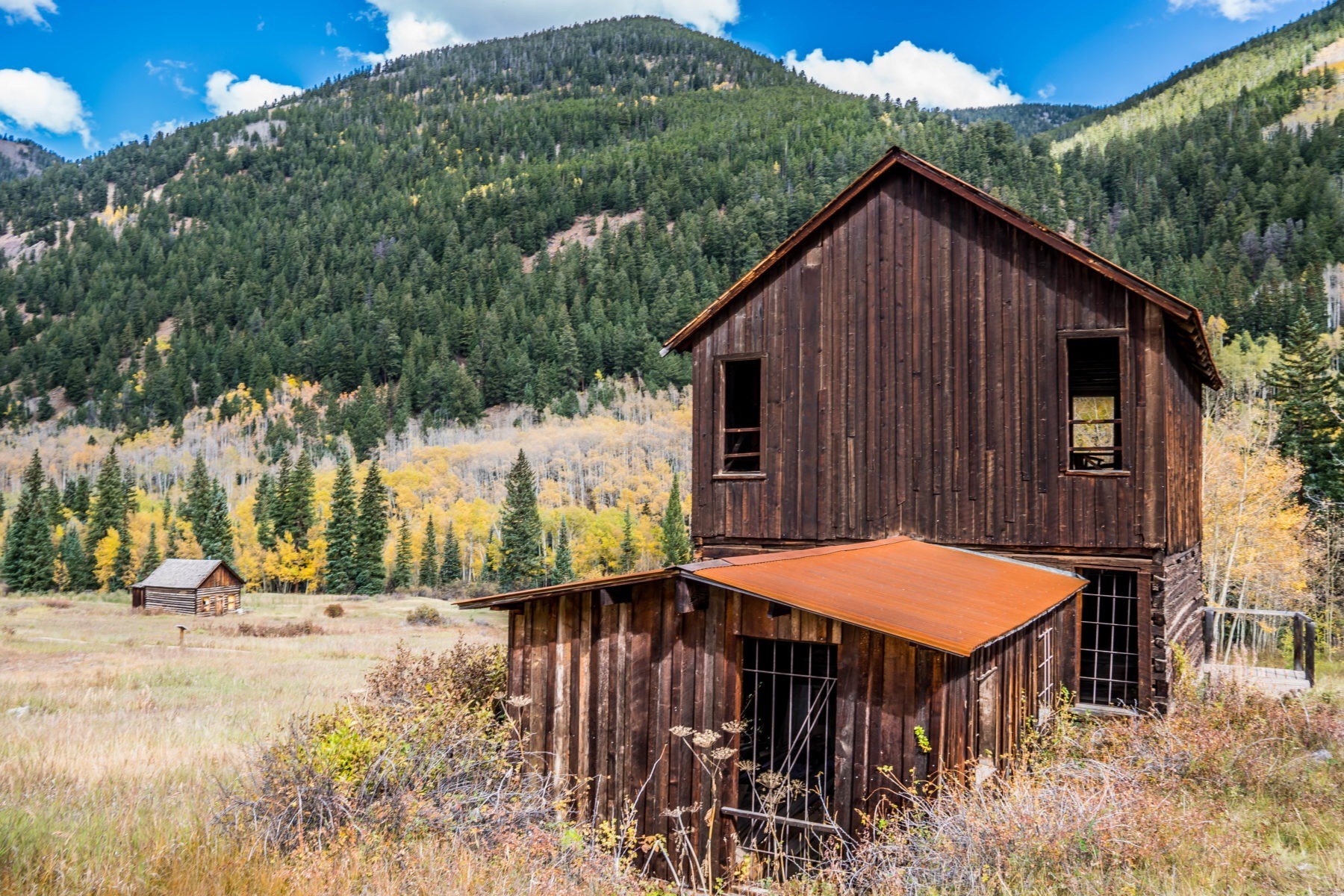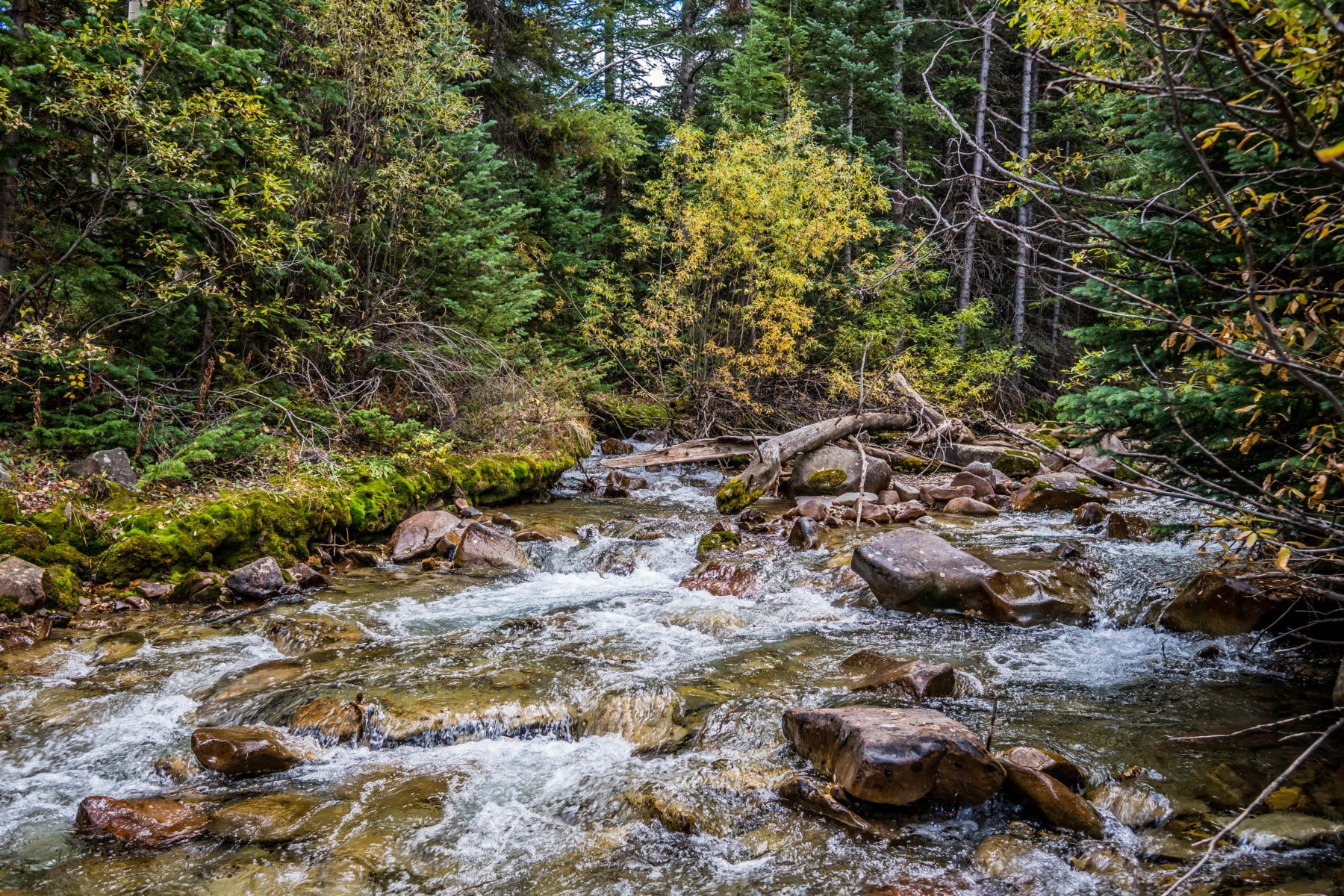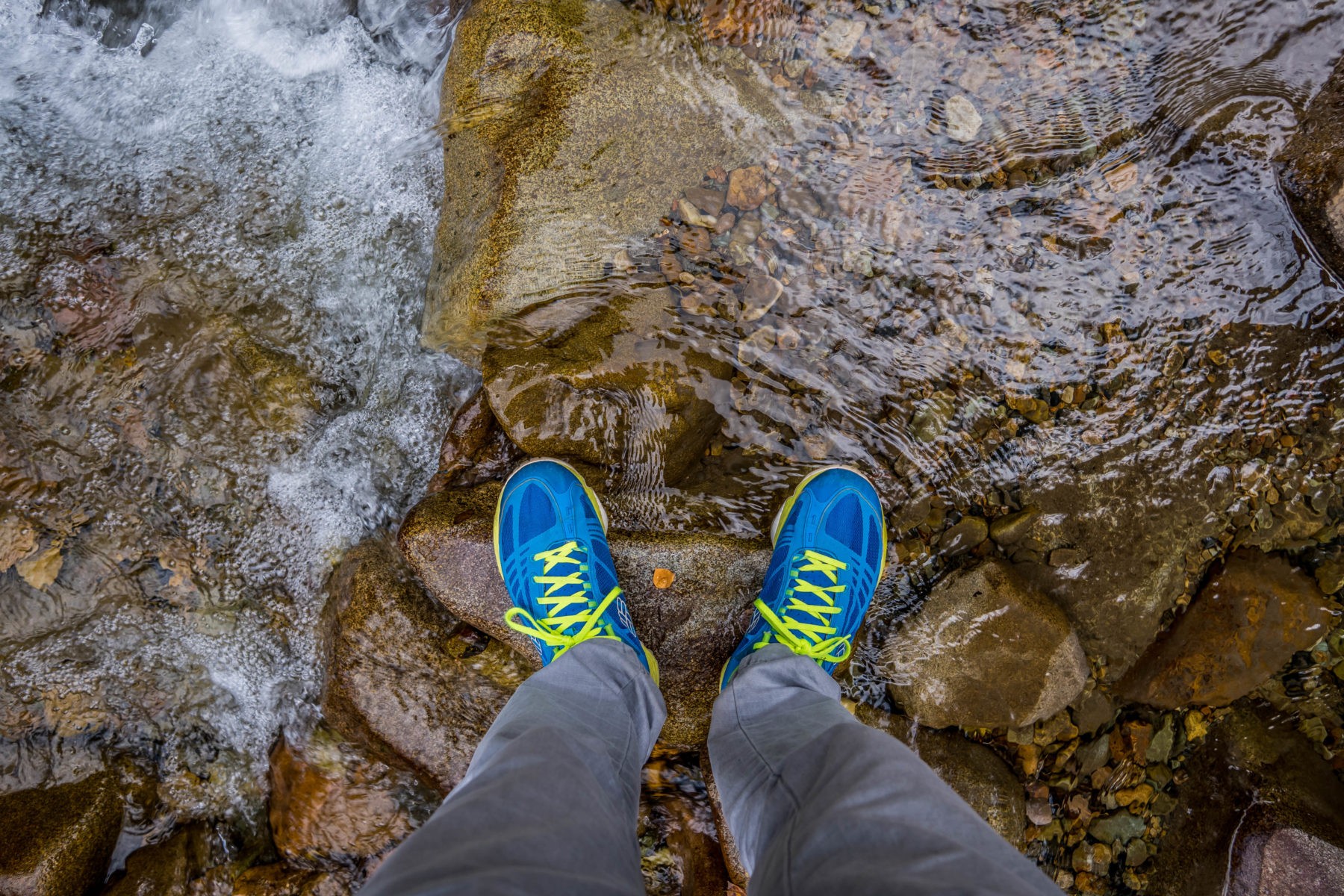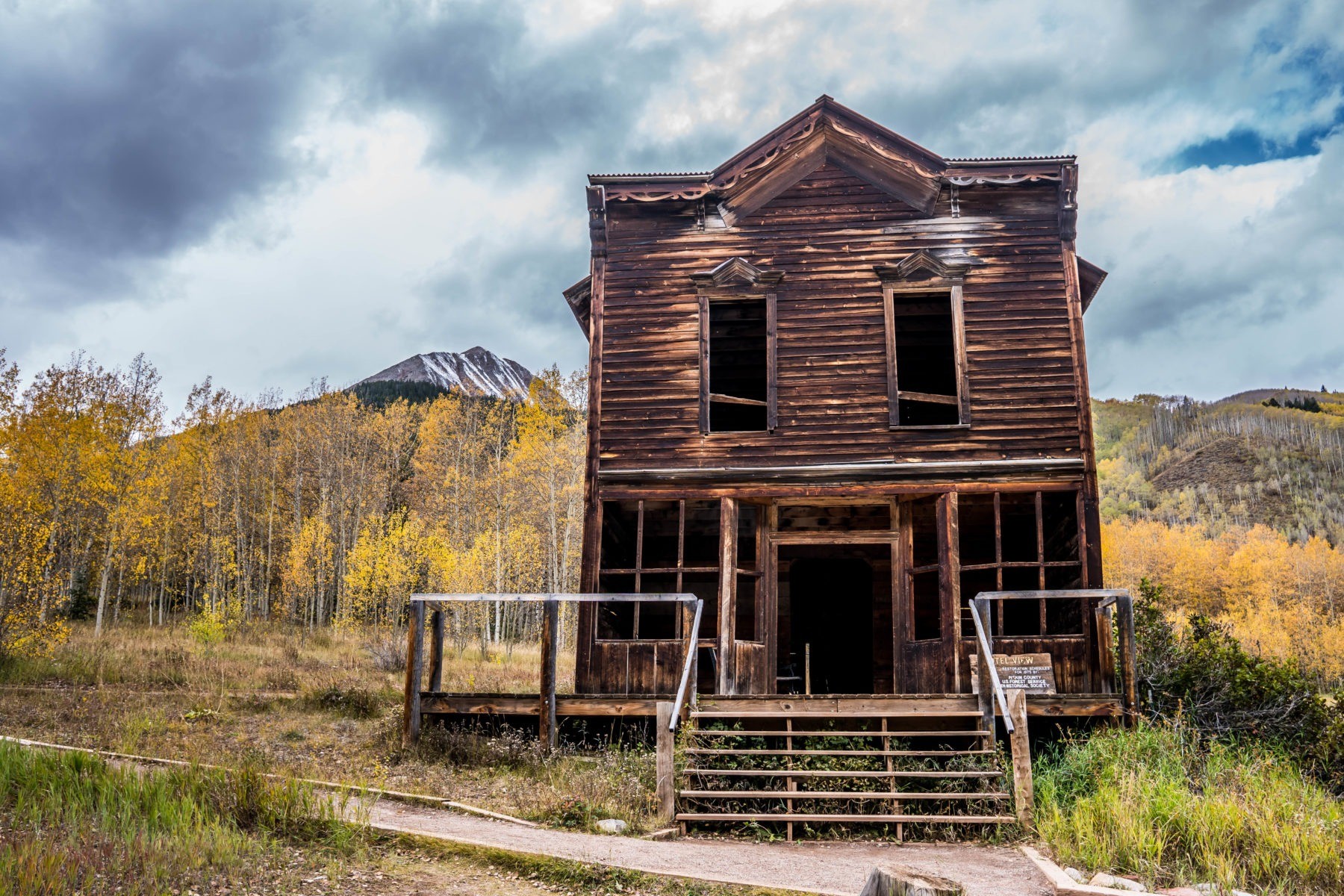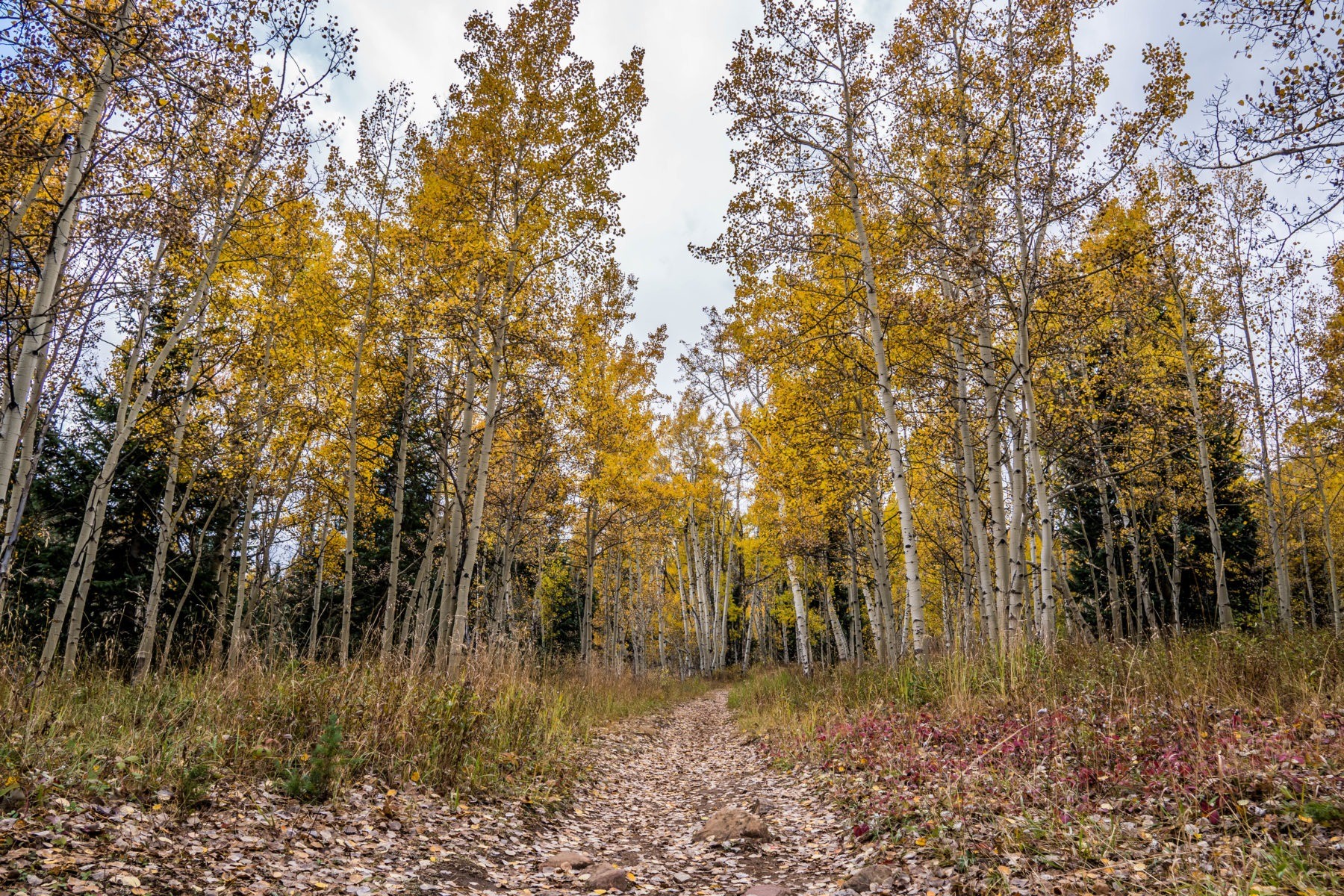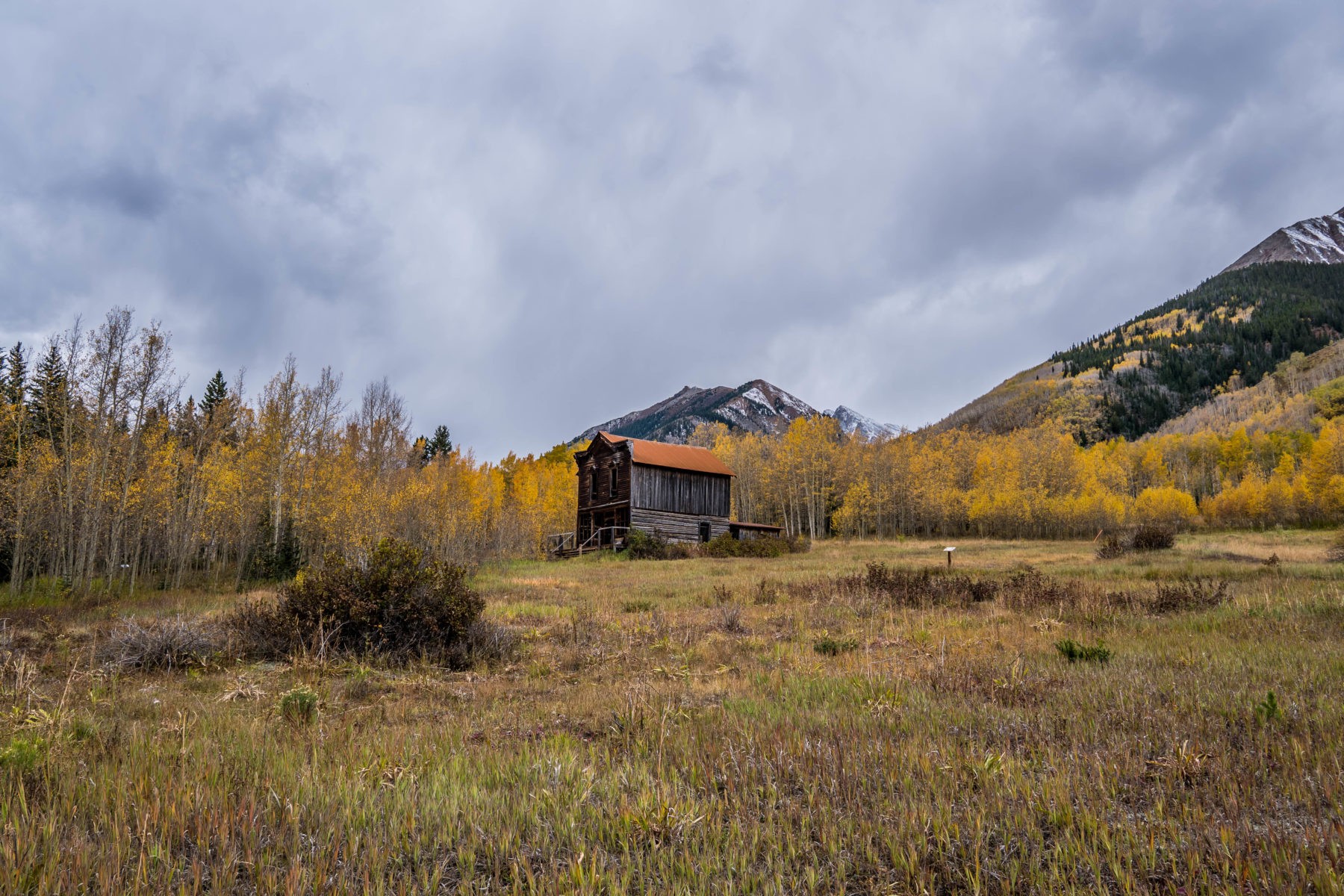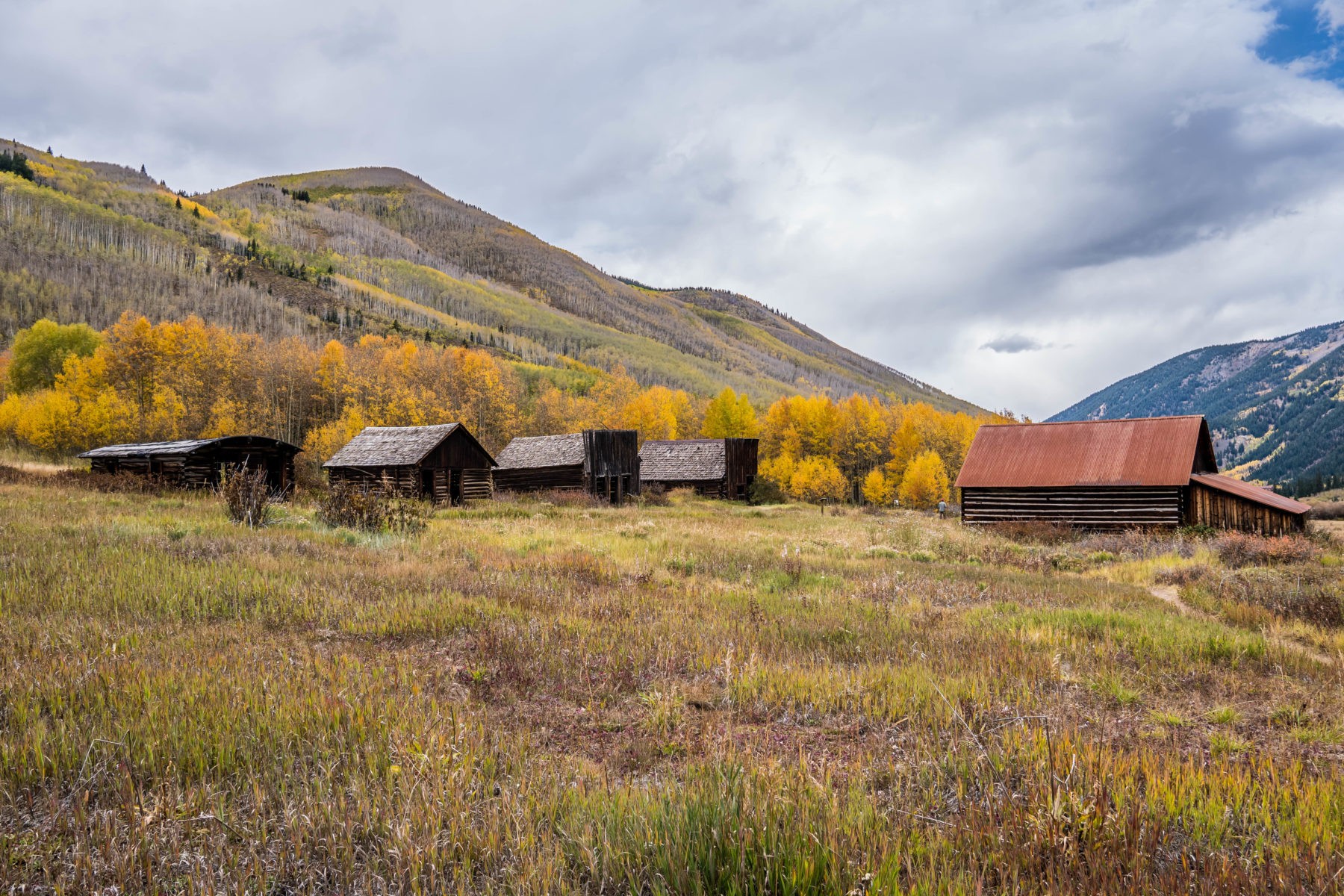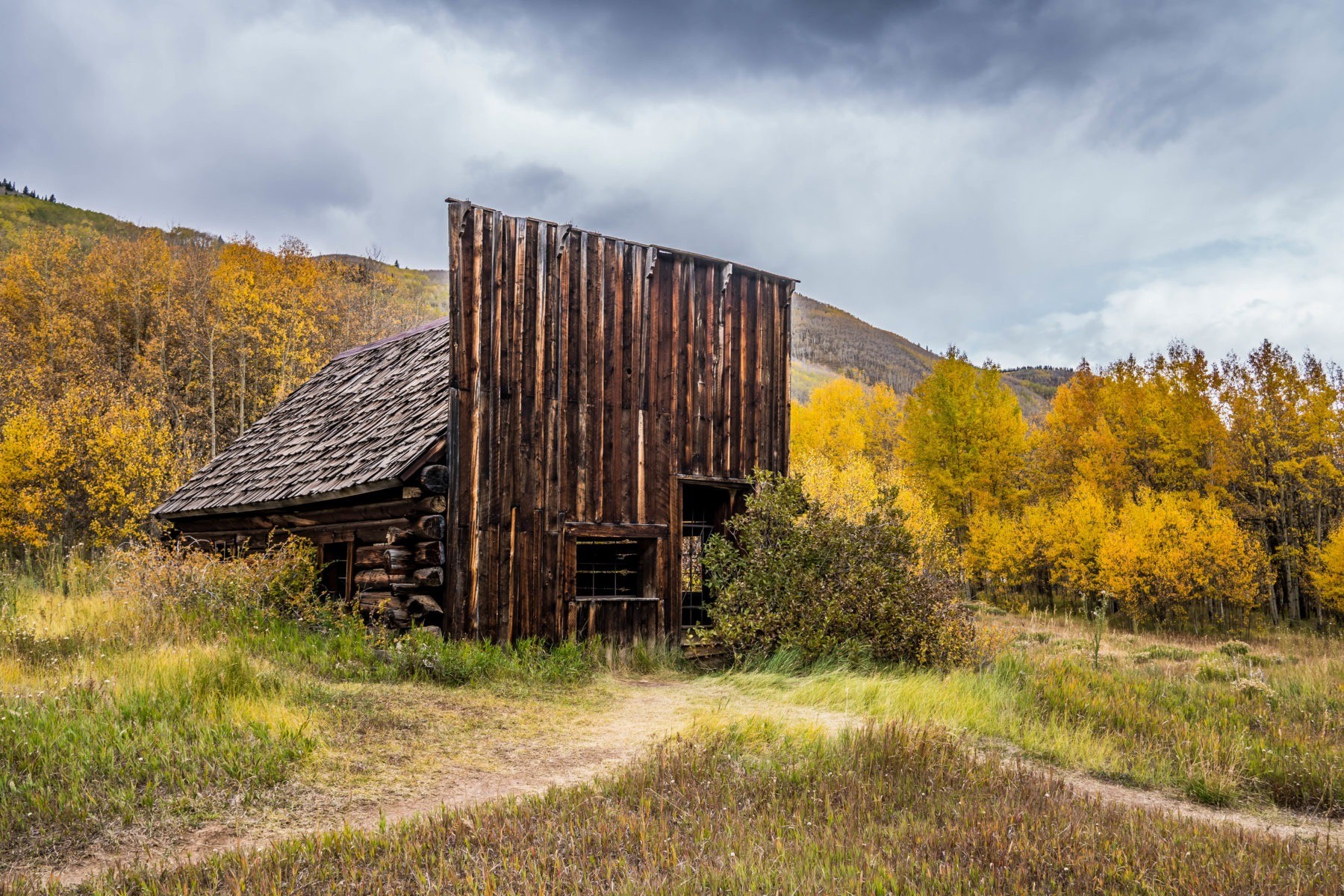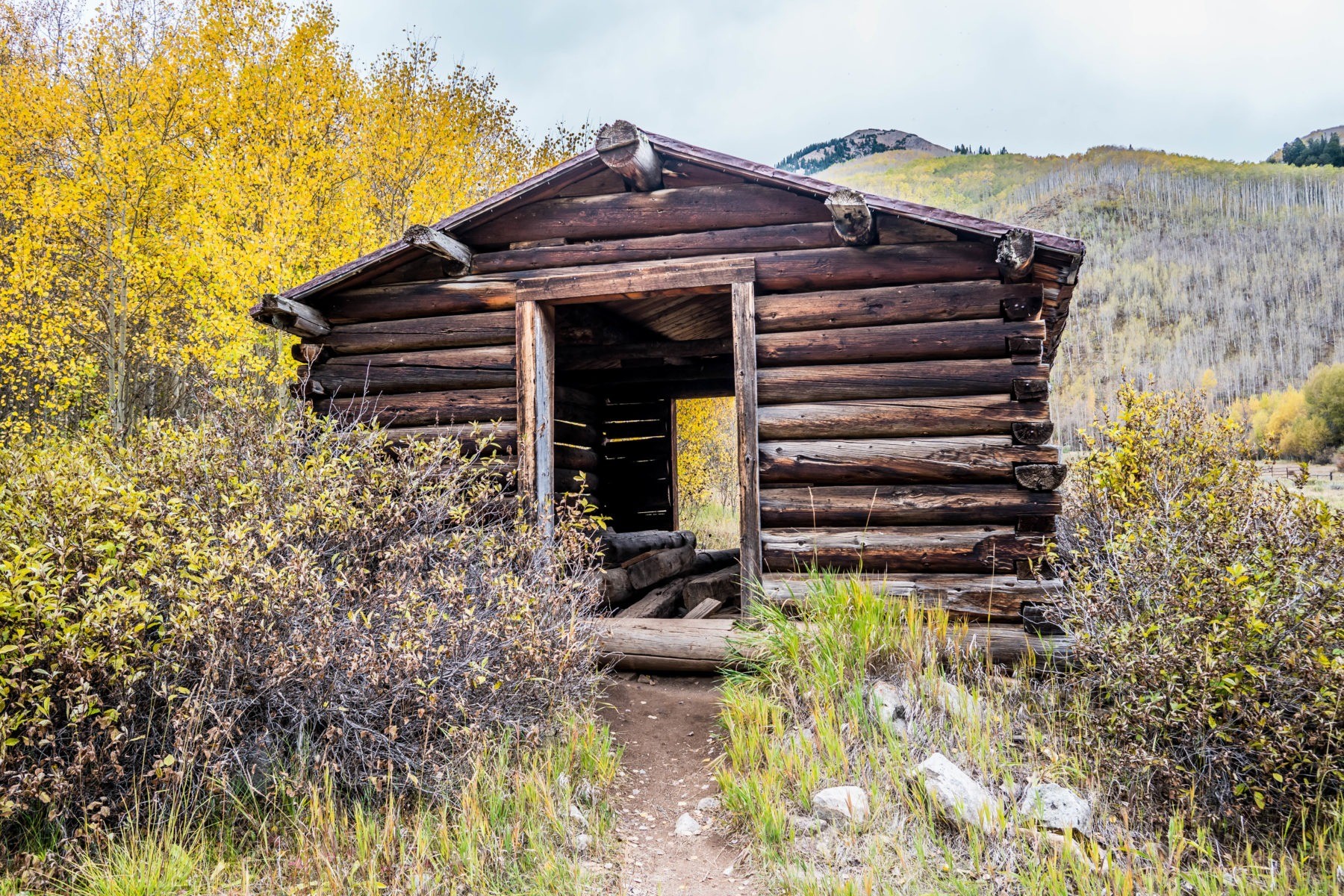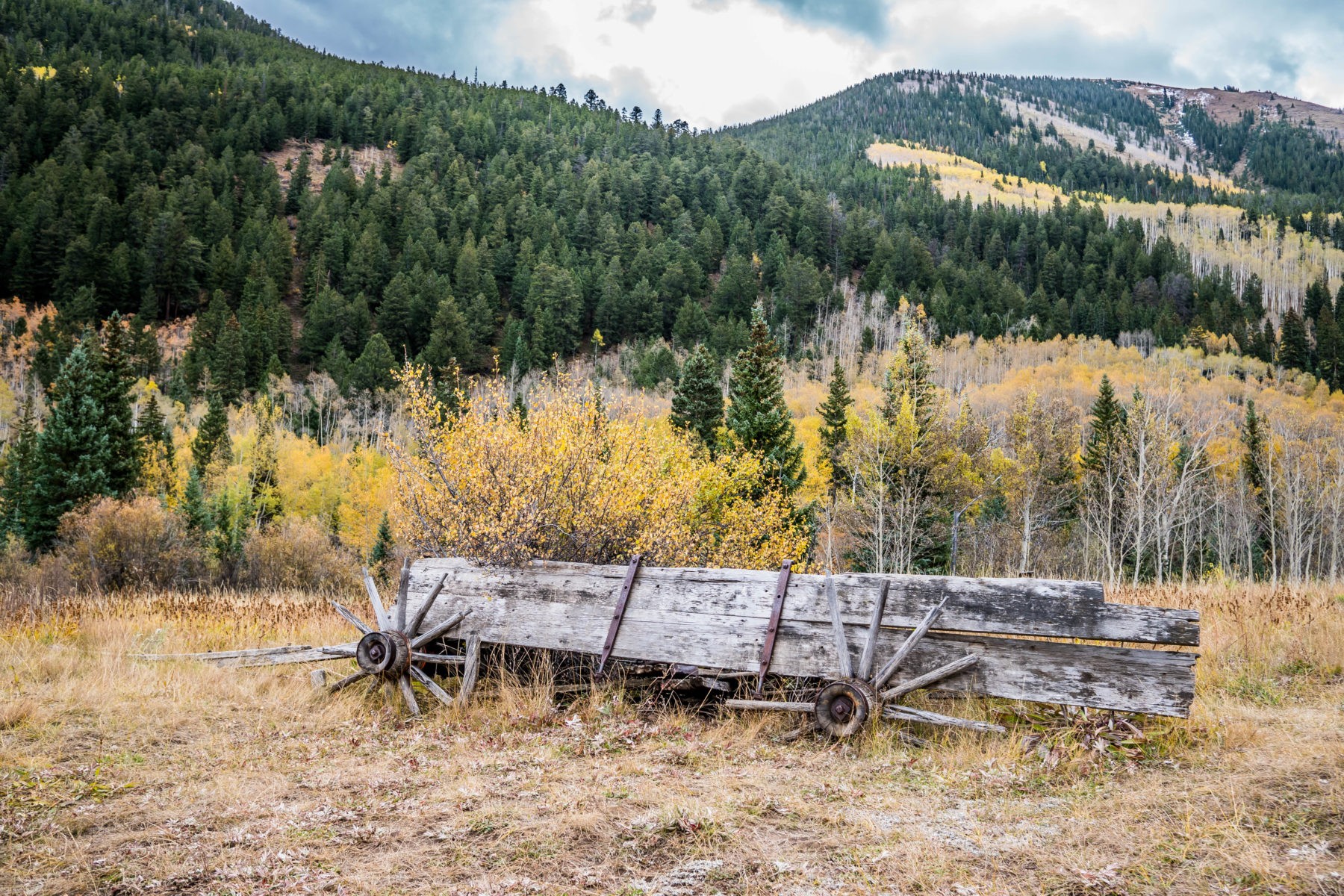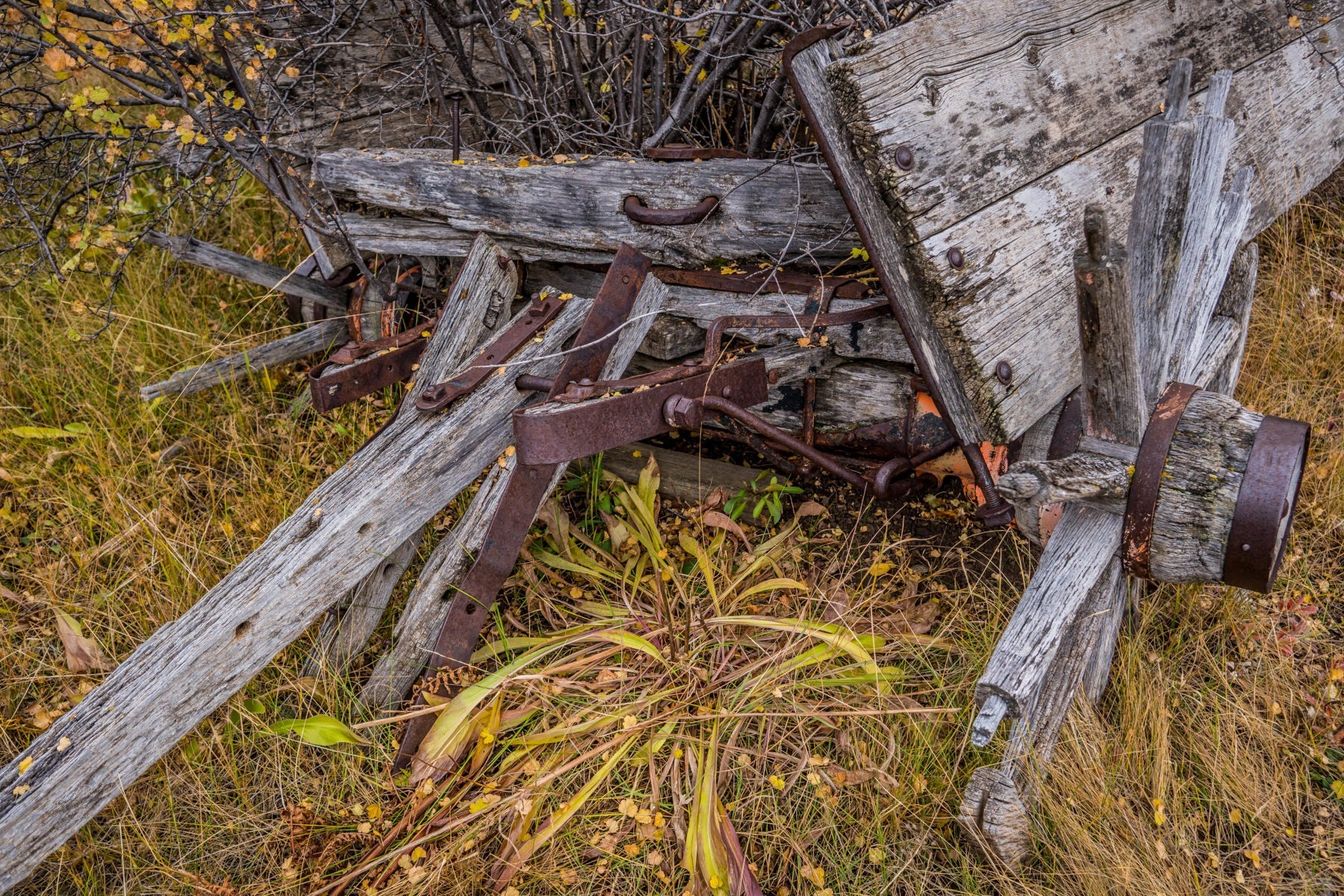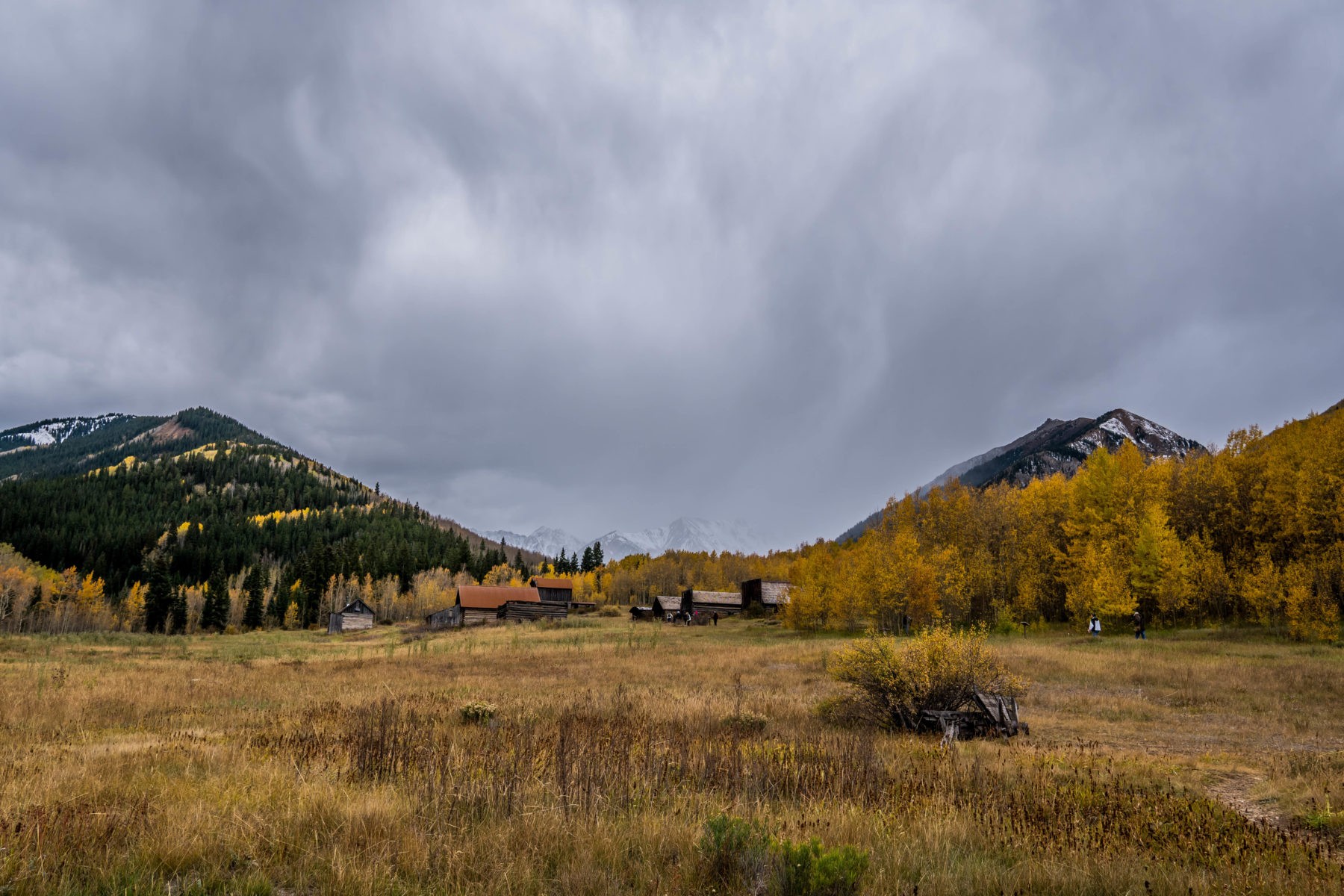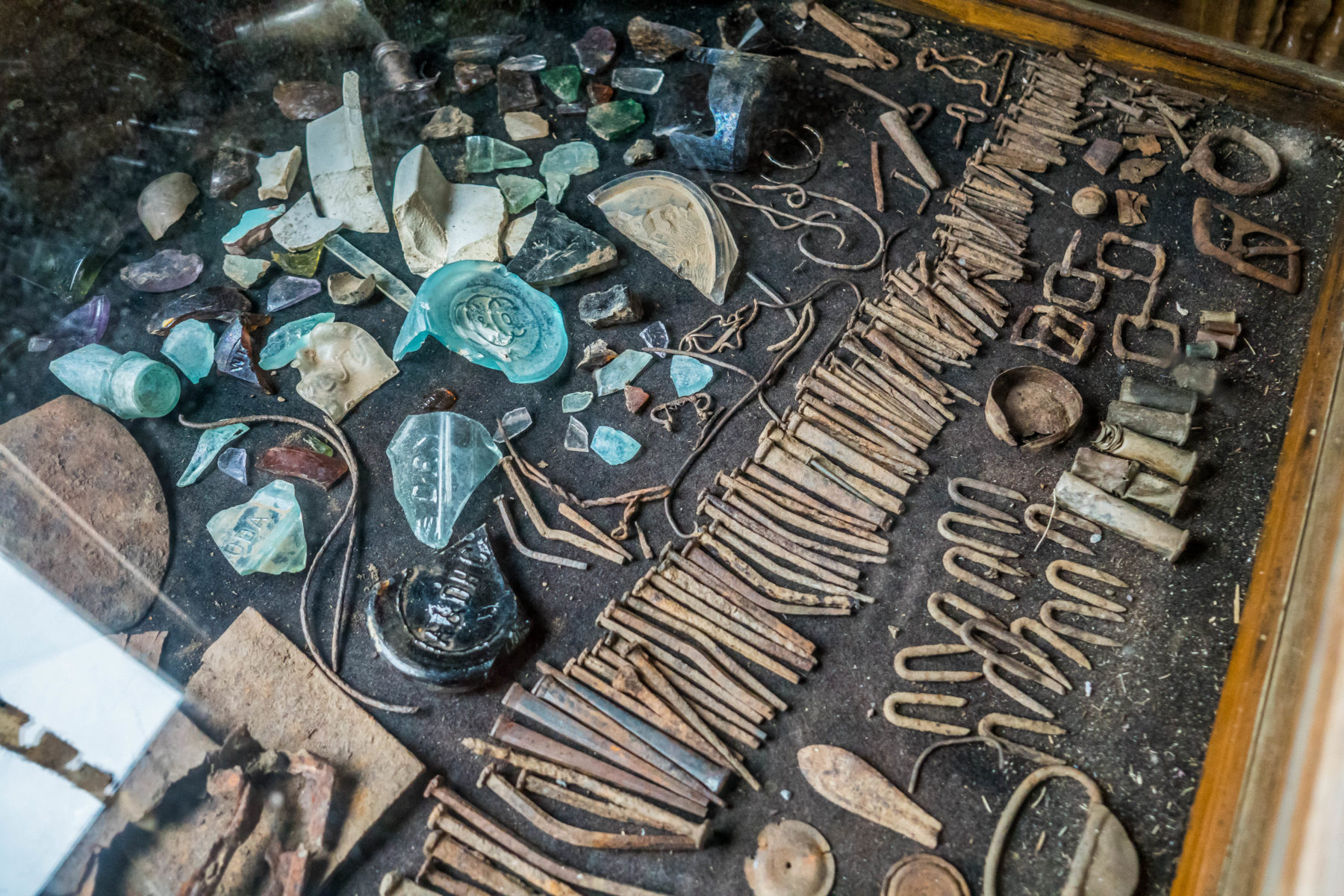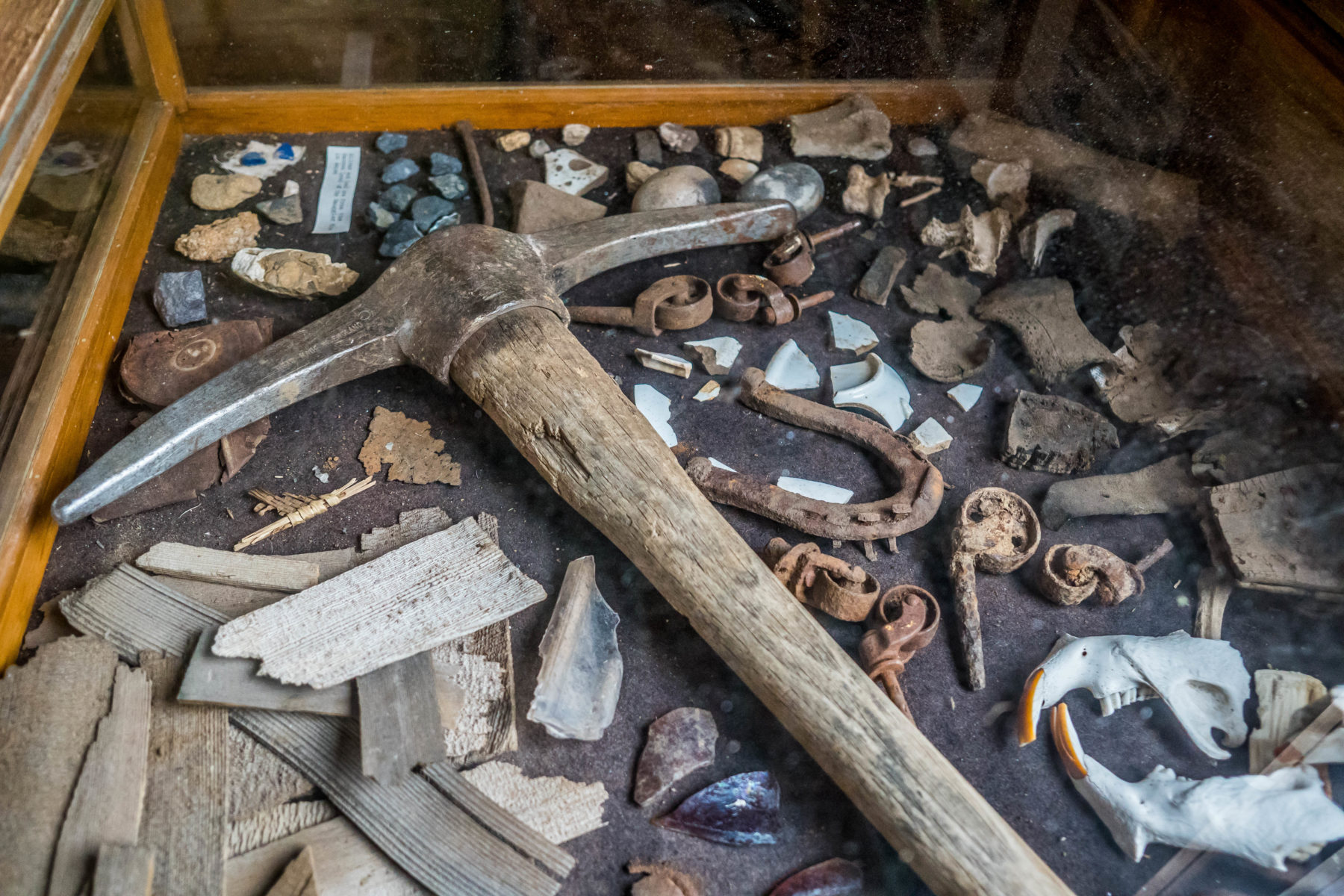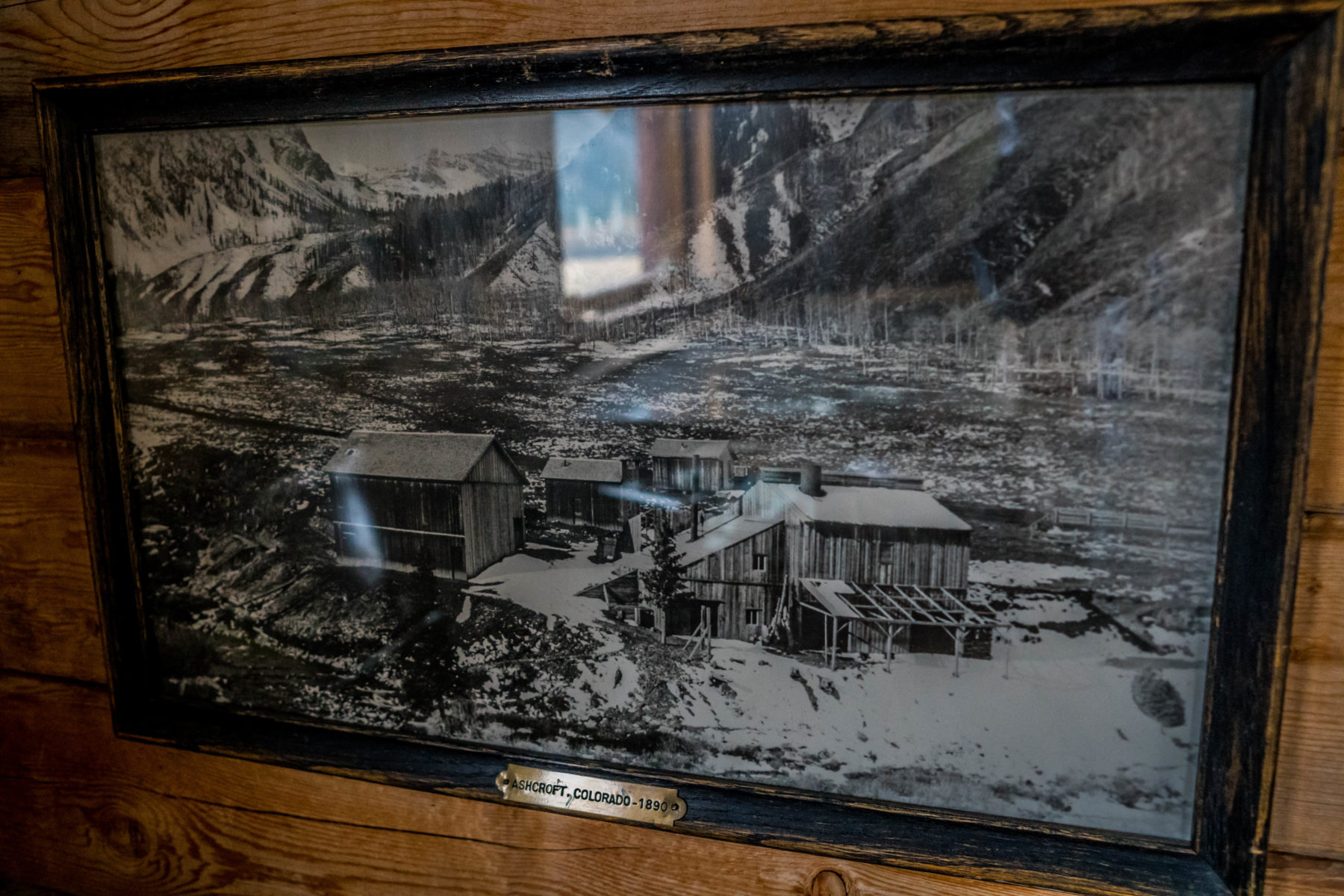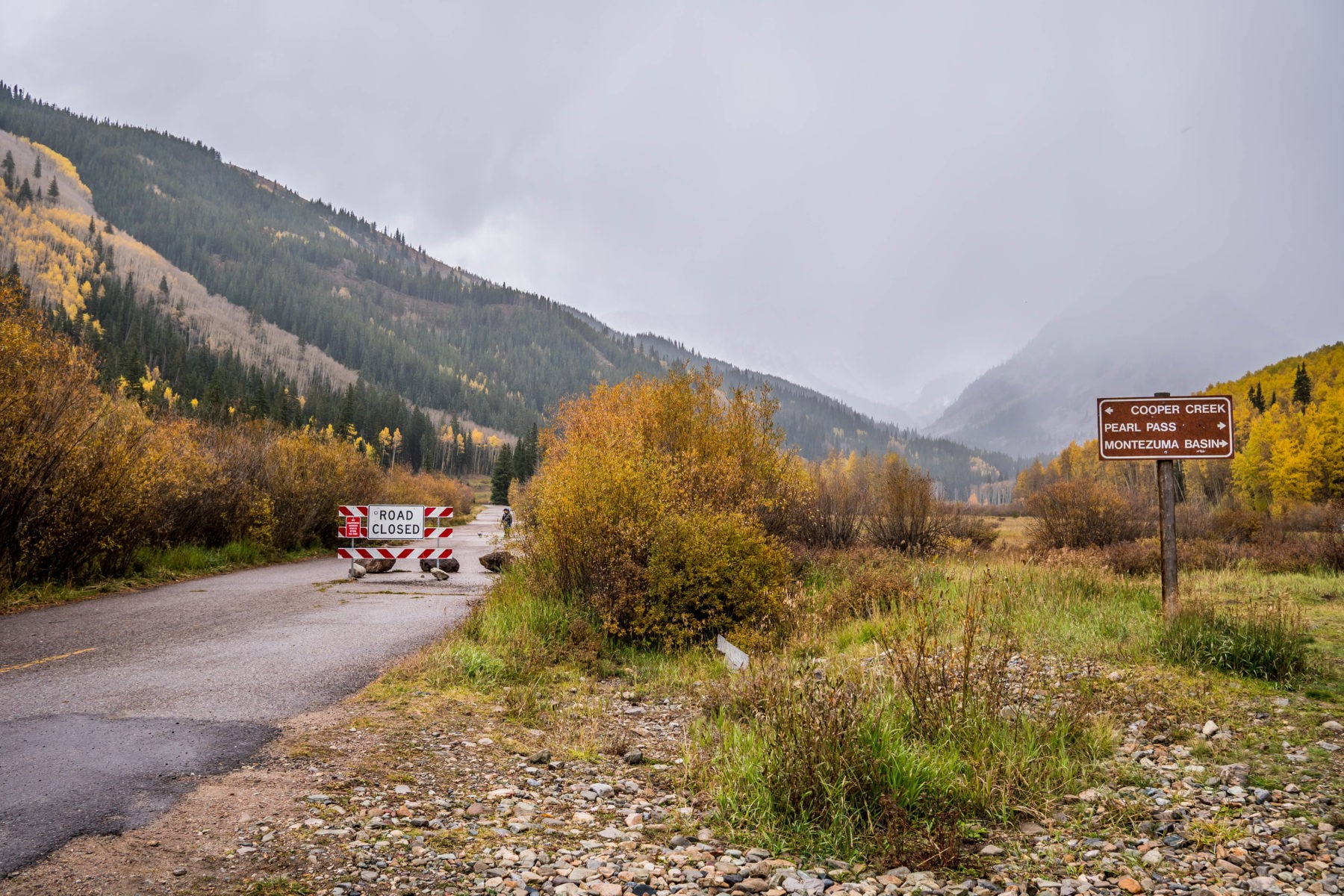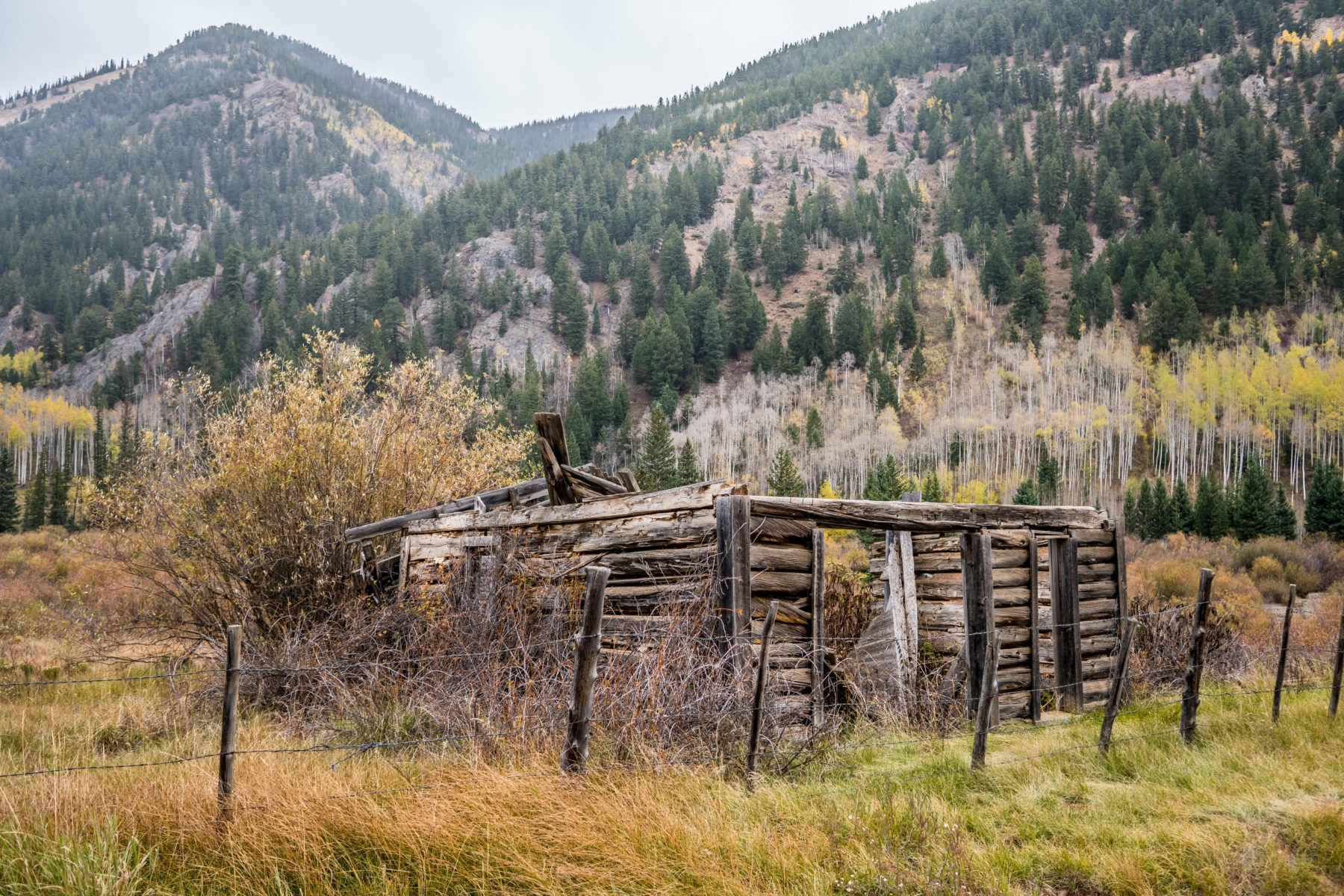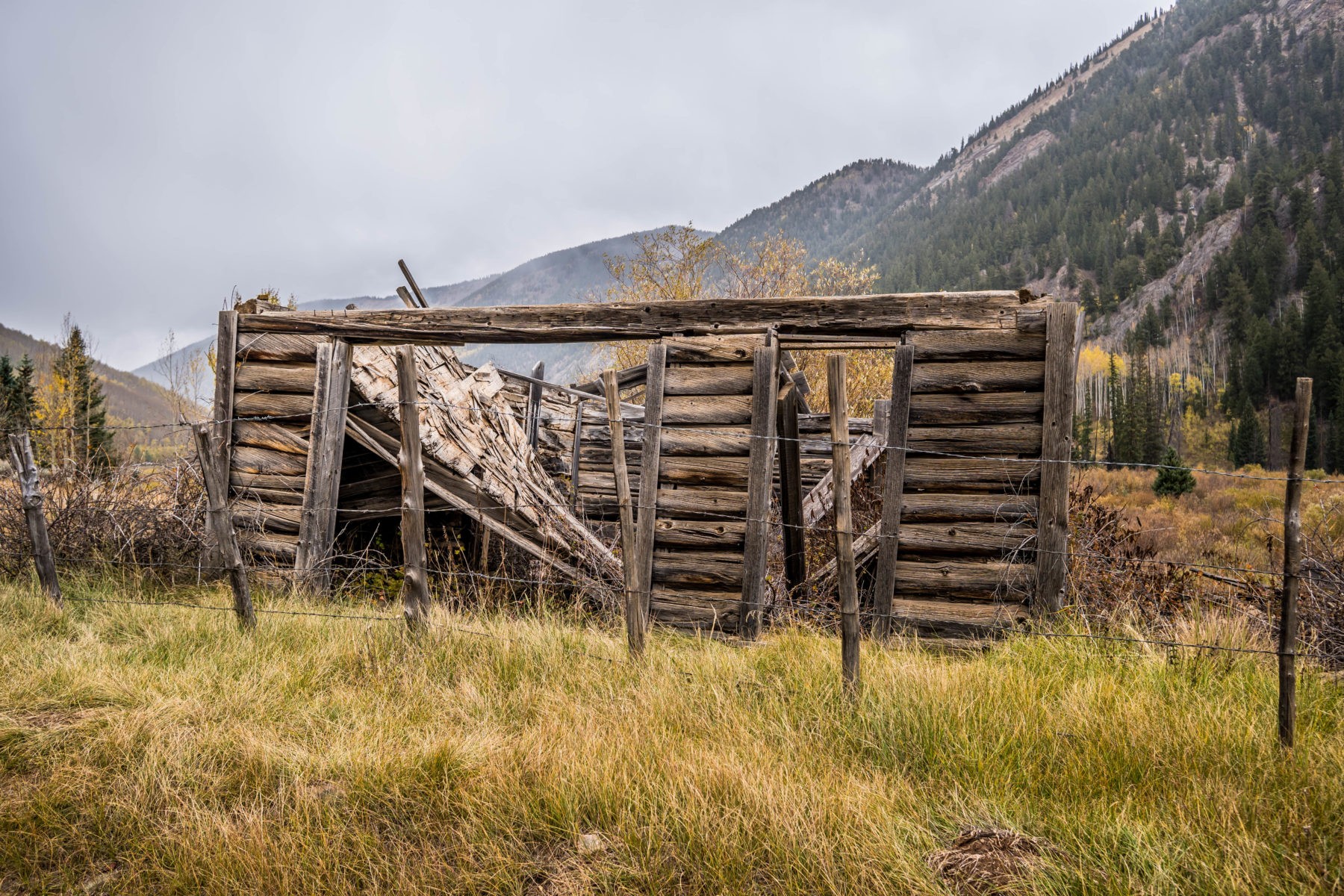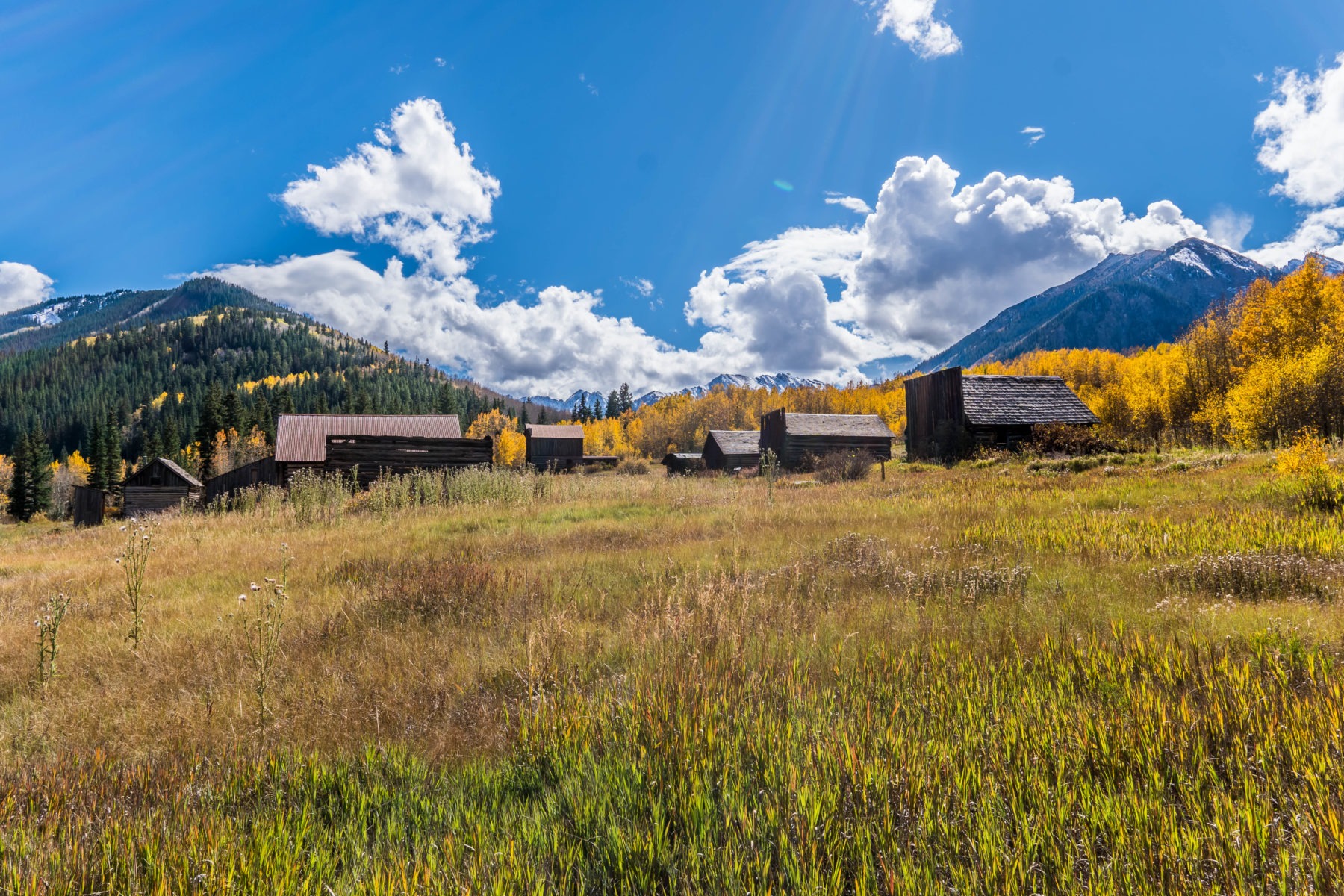
While in Aspen to photograph and explore the Maroon Bells-Snowmass Wilderness of White River National Forest, I heard about the abandoned mining town of Ashcroft. On my third day in town I decided to drive up and explore it.
At the top of the mountain road is a pull-off on the left and you can park right inside the abandoned mining town of Ashcroft. The town once covered most of this valley but all that remains are a few structures. I paid the $5 admission fee and the guy noticed my sandwich that I picked up at Grateful Deli in Aspen. He told me that there were some picnic tables down by the stream in the woods that were a perfect place to have lunch, so I took his advice and made my way down there. It was a perfect picnic spot, and I couldn’t help but think about how 140 years prior, I would have been sitting inside a bustling mining town of 16,000 people. It was pretty surreal.
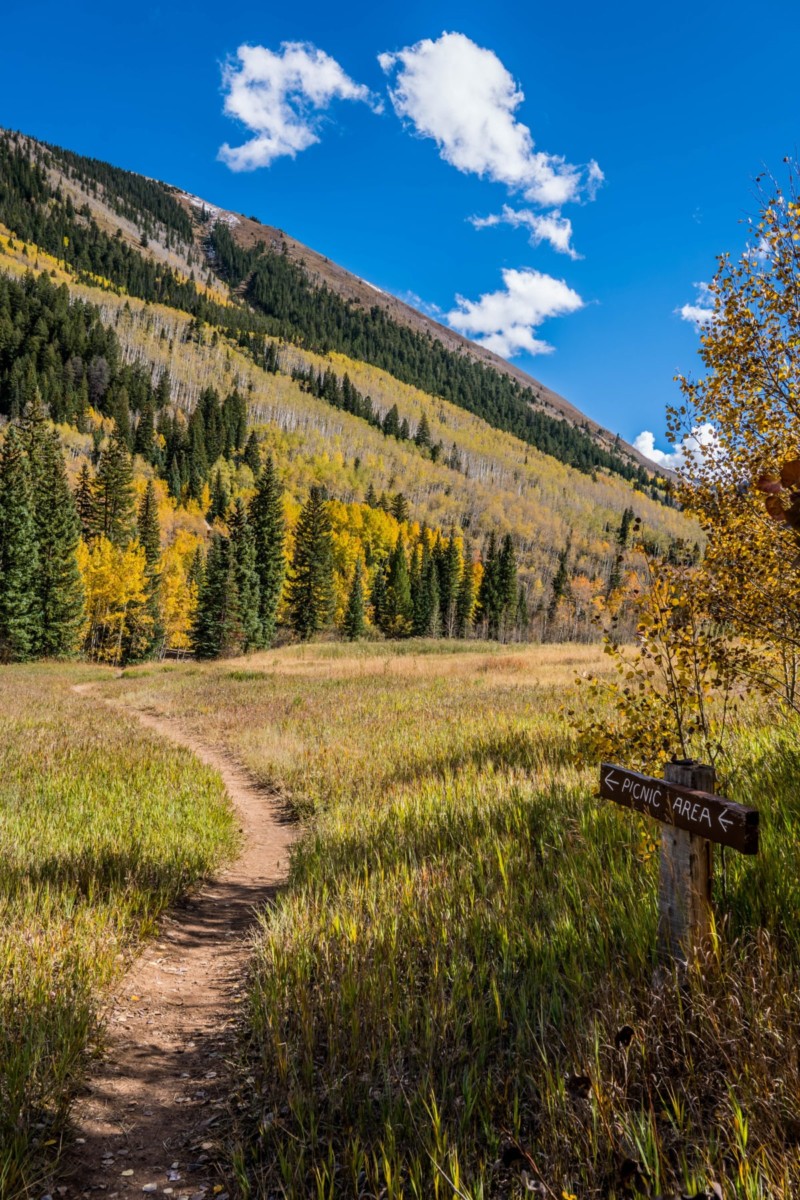
After lunch, I wandered in and out of the remaining town buildings; the log homes, post office, saloon, and the hotel. At one point there had apparently been 16 saloons in the town! There was a couple there at the same time as me who asked me to take their photo in front of the saloon. When they handed me their camera I realized it was the Sony A7 R II and I was pretty psyched to hold it in my hands. The A7 is the camera that I desperately want; but haven’t sprung for yet. It’s heavy, but boy does it feel good when shooting! When I had finished exploring Ashcroft I had planned on taking the 1.5 mile hiking trail up the mountain; but a snowstorm started rolling in from Star Mountain and before I could even make it to the trail head I had to return to my car.
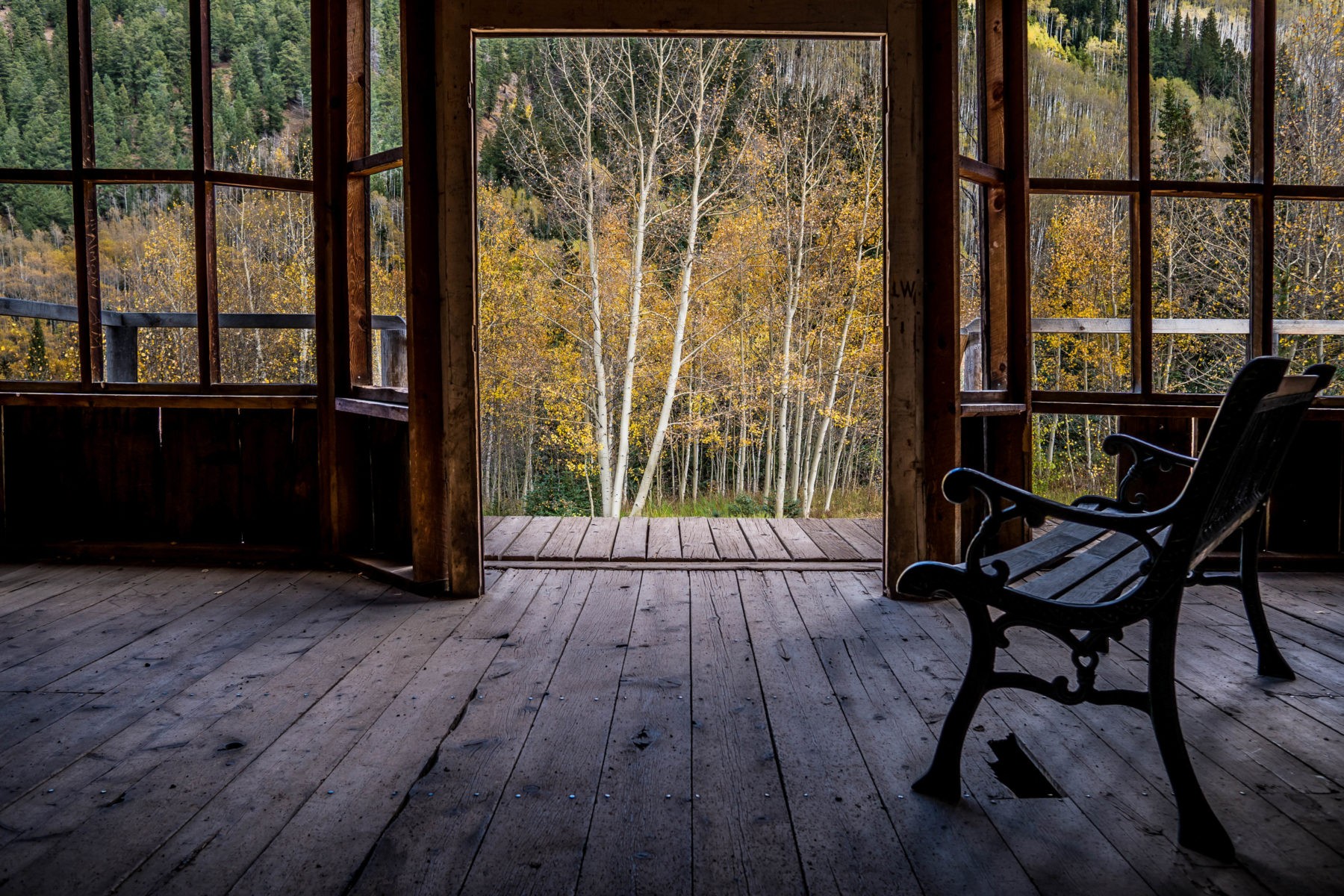
On the way back, I stopped back at the entrance to chat with the guy that was collecting money. His name is Dayton and he was a super cool guy. He knew a ton of info about Ashcroft and about pretty much all of Colorado. He gave me the names of a ton of fourteeners that he recommended climbing, and told me a bit about his life. He said that his girlfriend had already climbed nearly all of the fourteeners in the state, which is a remarkable accomplishment! He told me that if I drove up to the top of the road, that it terminates in a trail, and that there’s a restaurant on top (Pine Creek Cookhouse) that’s the last thing on the road. Apparently the restaurant is only accessible by snowmobile in the winter, and that the eclectic owner brings people up to it via horse-drawn sleigh. Dayton said that celebrities are almost guaranteed to be seen at the restaurant in the winter. Pretty rad!
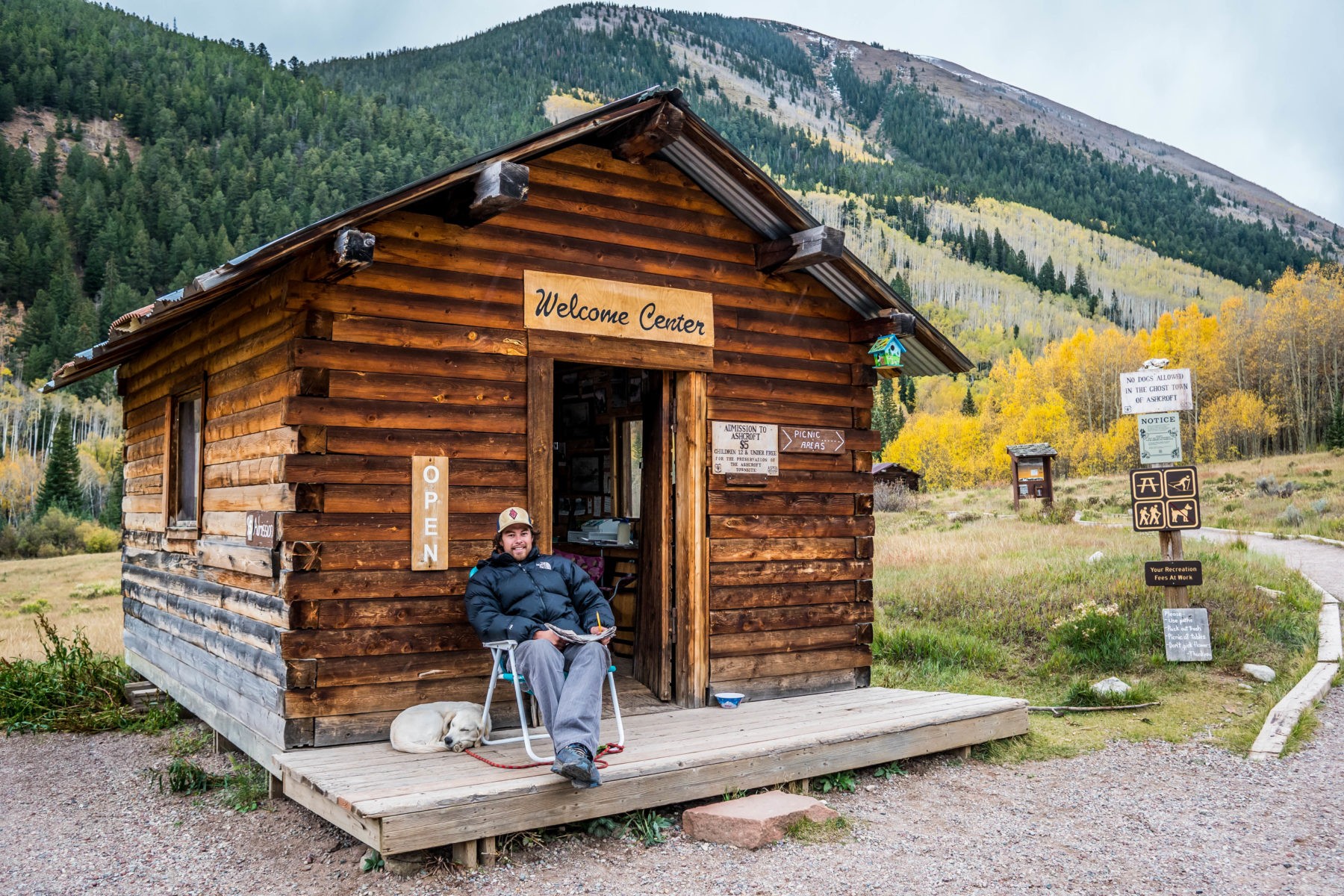
Ashcroft may be home to nine restored buildings now, but it was once a town with a population that rivaled Aspen Colorado. In the spring of 1880, prospectors Charles B. Culver and W.F. Coxhead left the boomtown of Leadville to search for silver in the Castle Creek Valley. After vigorously promoting their findings back in Leadville, Coxhead returned to find 23 more prospectors had joined “Crazy Culver” in the camp they named Castle Forks City.
They formed a Miner’s Protective Association, built a court house and laid out streets all in just two weeks. Each of the Association’s 97 members paid $5 — or one day’s work — to enter a lottery for building lots. By 1883 the camp, now called Ashcroft, had a population of about 2,000 and boasted two newspapers, a school, sawmills, a small smelter, and 20 saloons — bigger than Aspen and closer to the railroad in Crested Butte.
Ashcroft reached a peak with a summer population of about 2,500. It boasted six motels, 20 saloons, a bowling alley, a doctor, a jail, a female faro player and even a suburb known as Hunley’s Addition.As quickly as it boomed, however, Ashcroft went bust. The mines, initially producing 14,000 ounces of silver to the ton, turned out to be just shallow deposits. The town was actually in good shape to outlast rival Aspen until the 1887 decision to take the Denver & Rio Grande Railroad line into Aspen. The center of gravity immediately shifted to the rail corridor and many Ashcroft residents simply packed up and moved, taking their tents or houses with them on wagons or skids.
In the 1930s there was a new flurry of interest in Ashcroft, this time by international sportsman Ted Ryan and his partner Billy Fiske, captain of America’s 1928 gold medal Olympic bobsled team. They built the Highland Bavarian Lodge (5 miles north of Ashcroft on Castle Creek Rd.) and planned a European-style ski resort with an aerial tramway to nearby Mt. Hayden. World War II ultimately put an end to their plans and, sadly, Billy Fiske died in combat. Ryan then leased Ashcroft to the 10th Mountain Division, America’s soldiers on skis, for $1 a year for mountaineering training in the summer of 1942. After the war, ski area development, much like the silver mining, moved to Aspen and Ryan later deeded the site to the United States Forest Service.
In 1948 Stuart Mace, a veteran of WWII and commander of the 10th Mountain canine division, at Ted Ryan’s request brought his family and dog sled operation to Ashcroft, acting as the town steward. Eventually Mace and his famous Toklat huskies were featured in the popular 1950s TV series “Sgt. Preston of the Yukon,” for which the ghost town was fitted with false fronts to create a “Canadian” set. Given use of five acres by Ryan in exchange for caretaking the Highland Bavarian’s remaining holdings, Mace devoted the rest of his life to protecting the area from development and restoring the ecology. In 1974 he was joined in that effort by longtime Aspenite Ramona Markalunas and the Aspen Historical Society.
Ashcroft soon became a National Historical Site and AHS received the first USFS permit ever granted to a historical society to preserve and interpret a ghost town.Today, Ashcroft Ghost Town features three restored buildings and six buildings still in their original condition.
ELEVATION:9,521 feet
ADMISSION:$5/person to maintain site
LOCATION: From the roundabout on Highway 82, take the Castle Creek Rd. turnoff and travel 11 miles up the road.




